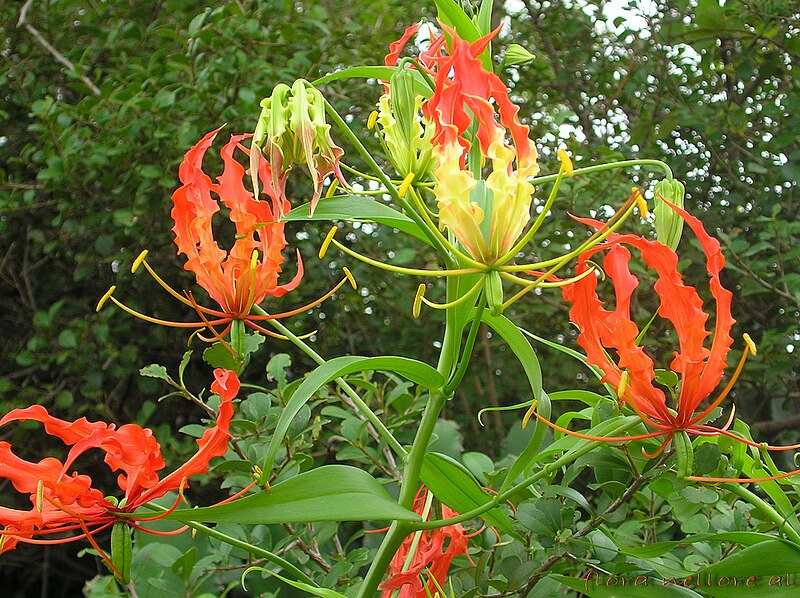
Image:Lalithamba from India
BM20 Glory Lily (
Gloriosa rothschildiana )
Gloriosa superba 'Rothschildiana,' also known as the flame lily or glory lily, is a tropical climbing vine with exotic, red and yellow flowers, native to Africa and Asia, and is a deciduous perennial that thrives in zones 8-12.
The name means "full of glory", appropriate for such showy exotics. These tender perennials form sizeable clumps and will grow 4 to 6 feet in a season. Vines are light weight, so do not require stout supports. Easy to grow and excellent for summer decks, and inside in sunrooms and greenhouses where there is sufficient room for vining plants. In cooler zones than 8b, lift in fall and store indoors or grow as houseplant, height: 4-6 feet,vining, color: flashy yellow and ruby flowers with wavy, swept-back petals.
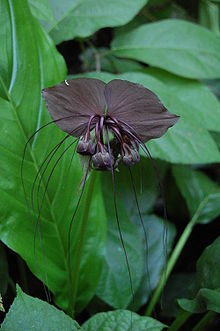
3524 Black Bat Flower ( Tacca chantrieri )
A most unusual plant introduced from parts of Malaysia, India, and East Asia, the Bat Plant will make you look twice. The main attraction of the plant is the strange, unique, purple-black flowers.
The flowers superficially resemble a bat in flight with long whiskers, and can grow up to 10 inches long. Taccas can be picky about their environmental conditions; however they grow fast and flower a lot when the conditions are just right. The Bat Plant should be planted in partial shade and in a humid and warm environment.
Soil should remain consistently moist, not allowing the plant to dry out between waterings. In winter months, when temperatures drop to 40F or lower, the Bat Plant should be moved indoors, or into a greenhouse to protect it from cold damage.
Makes a great container plant and is a real conversation piece.

3525 White Bat Flower ( Tacca nivea )
These can be grown as a fasinating houseplant, our outside in the shade in warm climates. Brilliant white flowers to 12" width stand upright with the petals spread to the extent that they appear as a white dove - or as a bat-like form. The throat shows the coloration of faint purple- brown, and from this region protrude 10-20 prominent dark purple bracts. Flowing from this area are up to 30 thin white tentacles "whiskers". An irresistible plant for many. In the wild they grow in tropical and subtropical Asia, and in cooler climates they grow best in a shady area in a hot, humid greenhouse. Zone 10 or higher outdoors, or grow indoors in cooler climates.
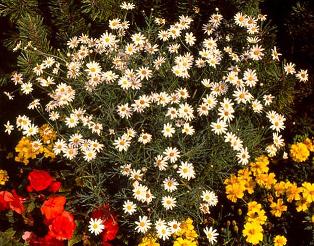
LET985 Snow White ( Argyranthemum 'Snow White' )
This is a cultivar of the marguerite daisy (Argyranthemum frutescens) known for its profusion of pure white daisy-like flowers with yellow centers, often grown as an annual or short-lived perennial.
Bushy, upright habit, typically grows 2-3 feet tall and wide. Has continuous bloom from spring to fall. Prefers full sun or partial shade and well-drained, moderately fertile soil.
Great for containers, borders, and cut flowers. Attracts pollinators like butterflies and bees.
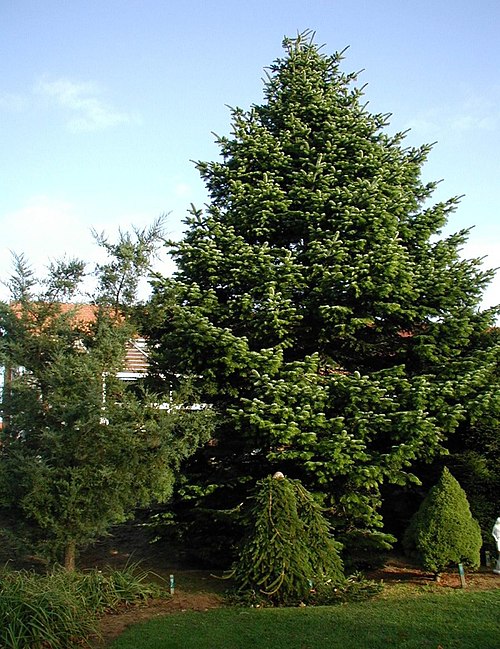
Image: Sten Porse
TRZ180 Bornmuller's Fir ( Abies bornmuelleriana )
Also known as Turkish Fir. Looking for a beautiful and fragrant tree for your landscape or as a Christmas tree? Look no further than the Abies bornmuelleriana, also known as Bornmuller's Fir or Turkish Fir. This tree thrives in dry conditions, making it a low-maintenance option for any climate.
Plus, its fragrant needles add a delightful scent to your home or garden. Use it as a stunning centerpiece for your holiday decor or as a year-round landscape specimen. Grow some and enjoy the beauty and tranquility of this wonderful tree.
It can grow 50-80 feet tall, with a spread of 10-15 feet. Best for zones 5-8.
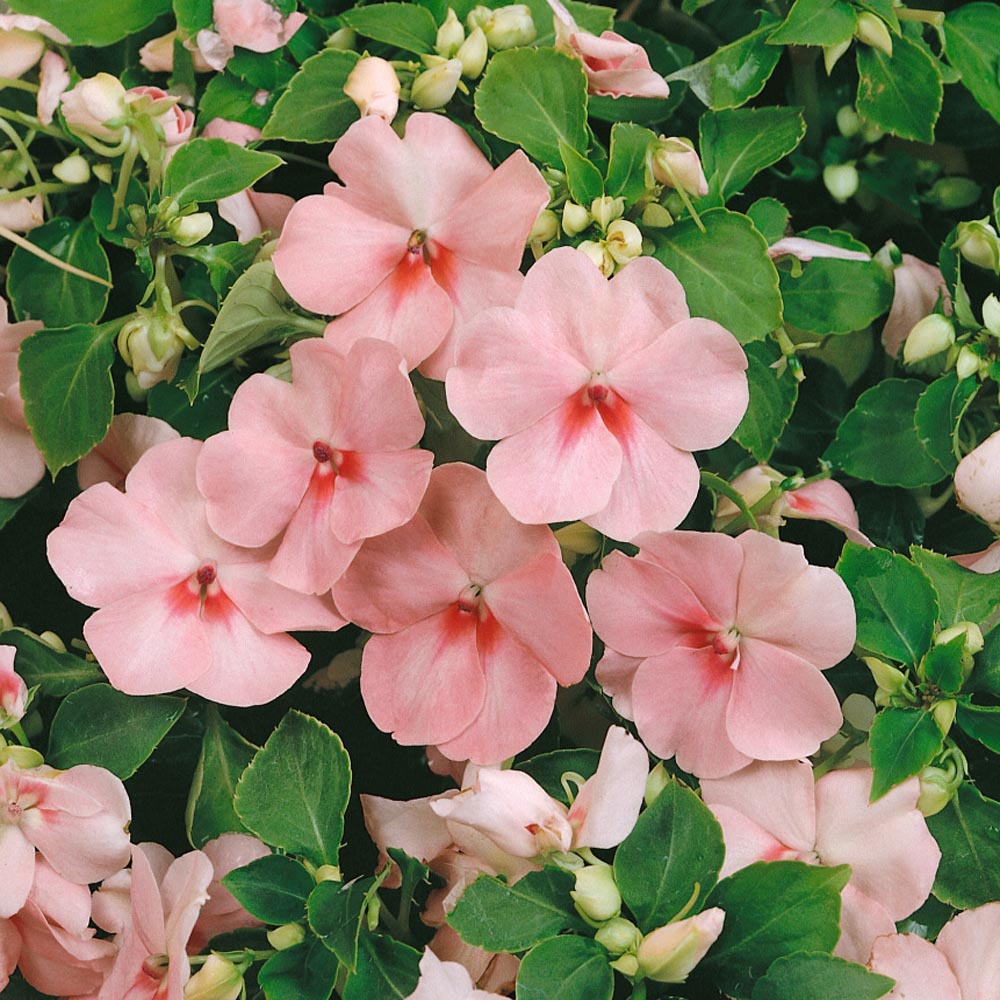
LET983 Baby Pink Impatiens
Brighten your shaded garden areas with the beautiuf Baby Pink Impatiens. Thriving at heights of 8–10 inches, these indoor plant seeds are perfect for containers, borders, or baskets. Their spring-to-fall bloom season ensures a long-lasting display. Whether you’re planting in shaded spots or using them as indoor flower seeds, this collection adds effortless beauty.
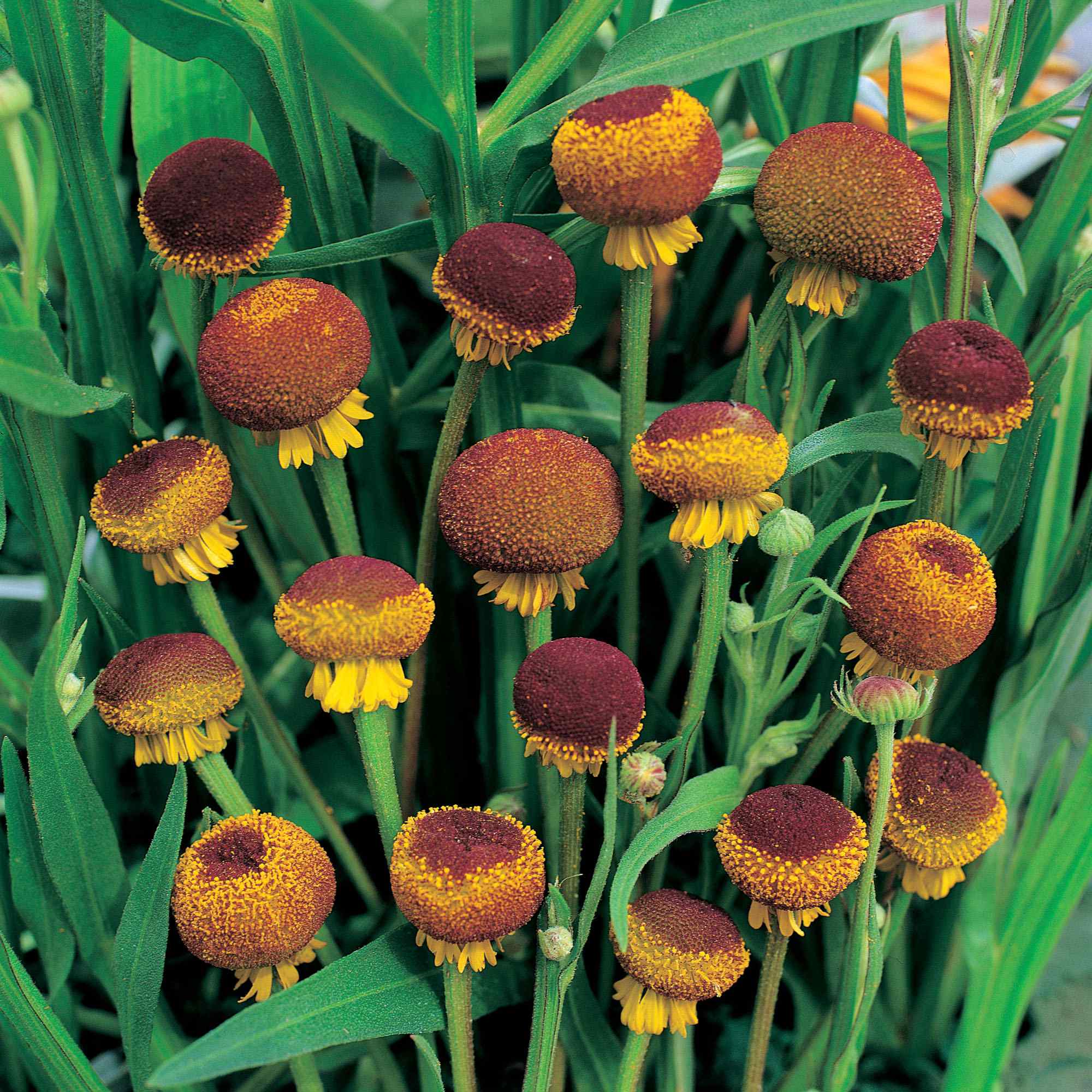
LET977 Autumn Lollipop ( (Helenium puberulum )
A curious plant for the front of the border. Autumn Lollipop boasts heads of rustic yellow and bronze with a small basal frill of ruffled petals. Highly ornate and also an extremely original cut flower.
Brown and yellow balls on sticks! Tough and easy, some would say this California native is small on petals, but big on balls - you should see it in full bloom May thru August where its "Lollipop" heads with itty-bitty golden yellow collars are borne on silvery stems. Reliably perennial, plant them at the front of bed or in a container for pronounced playfulness. Not fussy about soil, but blooms better with compost for sure. If you are looking to attract butterflies, this is the perfect option! It also makes cool dried flowers. Easily self-sows! Super versatile, it doesn’t mind drought or moist conditions. Grows 24-30 inches tall.
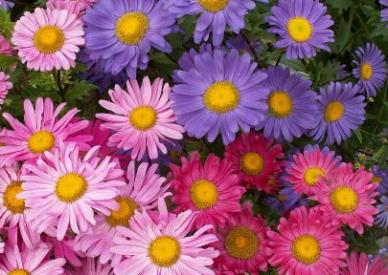
LET975 Rainbow Mix
Daisy flowers, large 3", double row of petals, yellow eye, mix of red, yellow, pink, blue, good cut flower, grows 24" tall.

TGL064 Pinto Bush Beans
Most popular variety for dry shell bean for winter use. An old heirloom field bean with 4-5 inch pods. A small pinto type with delicious flavor, much used for soups. These hard brown-speckled beans make for great chilies and refried beans. They are easy to grow and have a shelf life of five years. The pinto bean is most prominent in Mexican cuisine and is often used for refried beans. They can tolerate being dried out while growing, making them an easy bean to grow. With a shelf life of five years, pinto beans are a great option for those who enjoy edible gardening.

TGL065 Roma II
Gourmet Italian 15-20" tall upright bush type produces a heavy crop of stringless, flat, fleshy, tender green, 4½" long pods with white seeds. Captures the robust flavor of the old favorite Pole Romano Bean. Easy to pick. USES: Canning, Commercial, Dried, Freezing, Fresh Markets, Home Gardens.
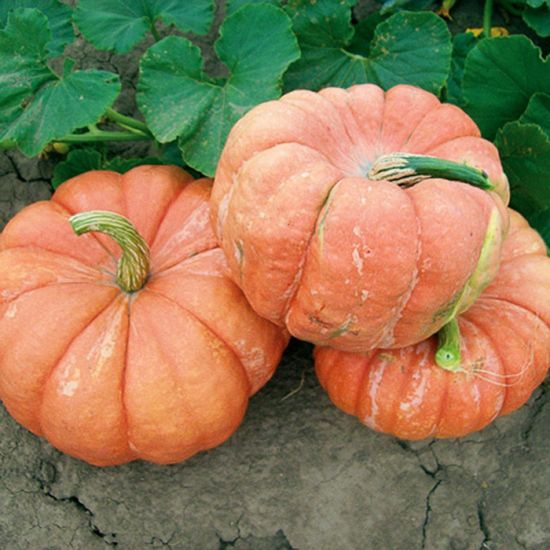
LET970 Indian Doll Hybrid Pumpkin
Indian Doll features a deep-orange color and deep-ribbing with an almost square appearance. Indian Doll's deep-orange, sweet flesh can be used for pies, soup, and gourmet culinary delights. Full vine plant habit. This pumpkin goes well with autumn decorations. Excellent Powdery Mildew tolerance. 20 to 24 pound fruits. 100 days.
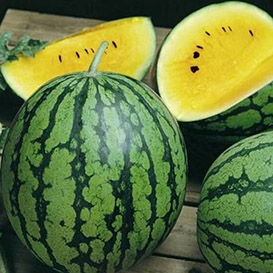
LET966 Yellow Petite
A great tasting and aromatic beauty at just 6-10 pounds, Yellow Petite Watermelon is the perfect size for small gardens. Referred to as an "Icebox" watermelon, it fits nicely into your fridge for summertime snacking. Best suited for shorter growing seasons, Yellow Petite matures in just over 2 months!
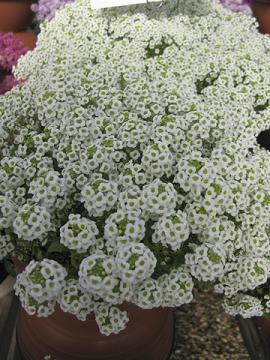
LET962 Giga White ( Multi-seed pellets )
Large, fragrant white flowers fill pots, baskets and borders, blooming all season. Plants are heat tolerant when watered regularly. Big, pure white flowers on dense, well-branched plants fill packs and pots well. More vigorous with larger flowers than Wonderland varieties. Multi-seed pellets, each pellet contains several seeds.
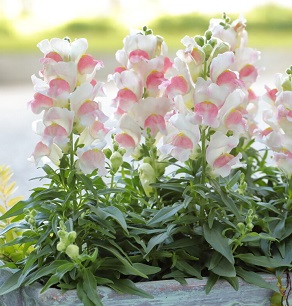
LET963 Candy Tops Pink Bicolor ( Pelleted Seeds )
Soft pink and bright white bicolor. Candy Tops is a show stopper with strong and full spikes that hold up for better shipping and ultimate retail appeal. An abundance of blooms on dwarf plants means constant color. Plus, sweet fragrance!
Strong stems make for better shipping and retail appeal. An abundance of blooms on dwarf plants means constant color. Plus, sweet fragrance!
A show stopper that plays well with others in mixed containers. Pelleted seeds for easy germination.
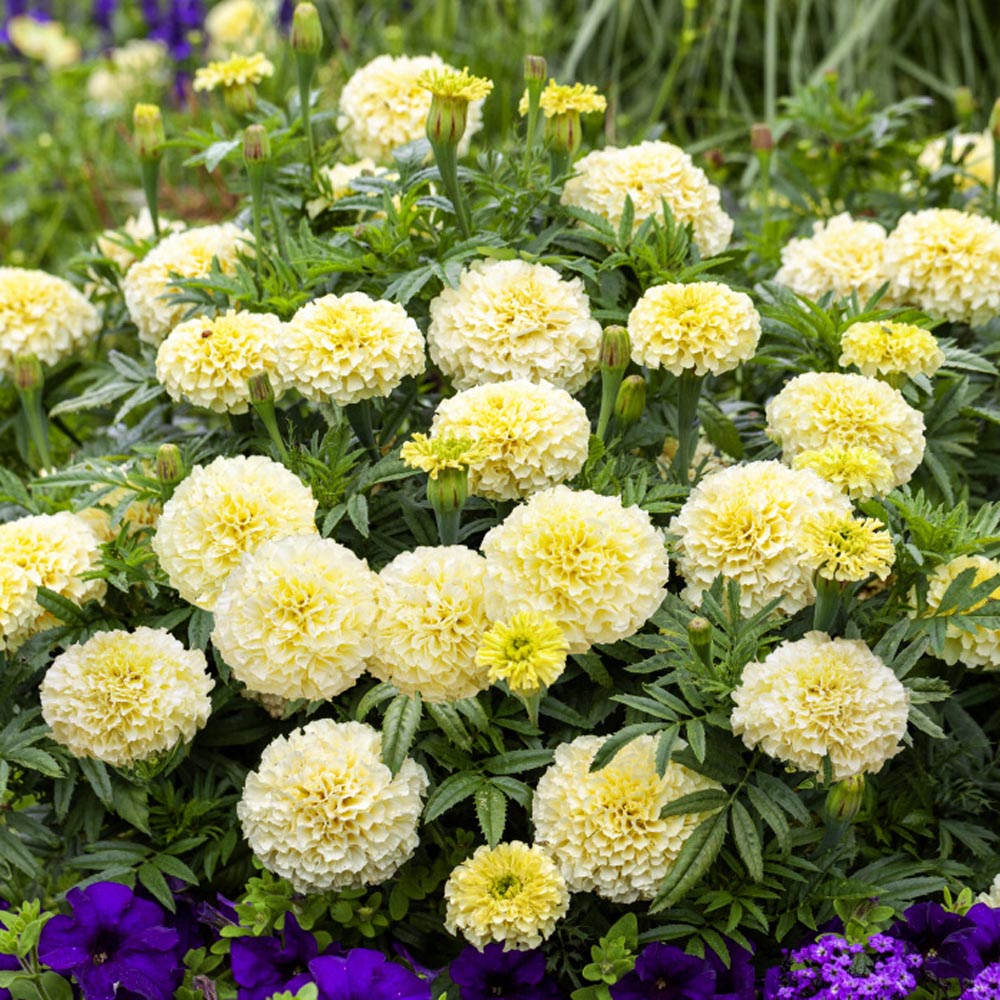
LET961 Kilimanjaro White Marigold
Kilimanjaro is a triumph in plant breeding, offering a real creamy white flower. The typical color spectrum is oranges and yellows, and this Marigold flower is pure white, and it measures 3 inches across.
To make it even more attractive, it is a prolific bloomer, giving a show of color all summer and into the fall and frost season. Grow these for formal or informal flower beds where they will contrast nicely with other bright or pastel flowers. This is a superb plant for the patio container as well.
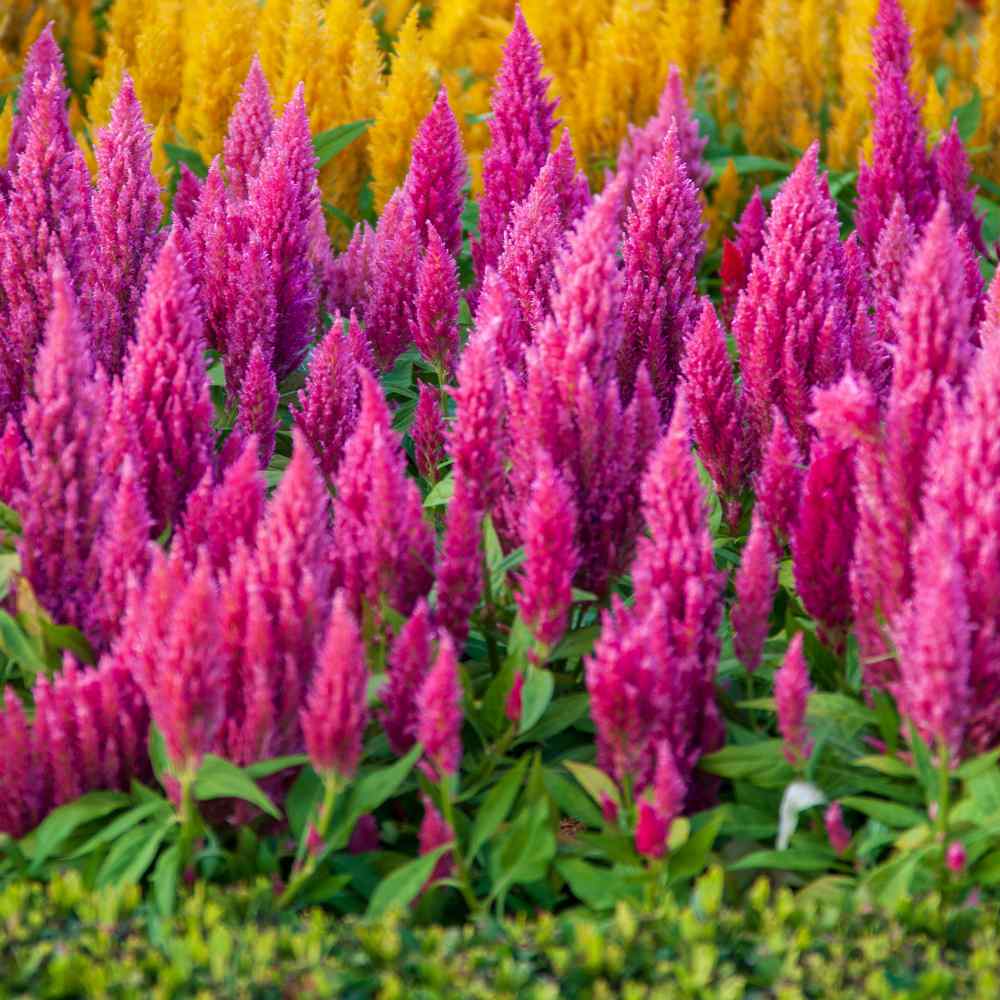
LET960 Castle Pink
A dwarf variety reaching 6 inches tall. These vibrant pink plumes flourish in USDA Zones 9-10, perfect for garden beds, containers, and cut flower arrangements. With easy planting and a compact form, these celosia seeds attract butterflies and bring lush color to any outdoor space. Ideal for both novice and experienced gardeners, this resilient variety adds a bold, low-maintenance touch to sunny garden areas.
As an All-America Selection (AAS) Winner, Castle Pink seeds exemplify excellence in garden performance. This award honors varieties that stand out for their vibrant color, durability, and high yield. Ideal for adding bold color to garden landscapes, containers, or cut flower arrangements, these celosia seeds offer gardeners a reliable, standout choice among flower seeds. With enhanced resilience and adaptability, they provide abundant growth, making them a top pick for creating lush, colorful displays in diverse garden settings.
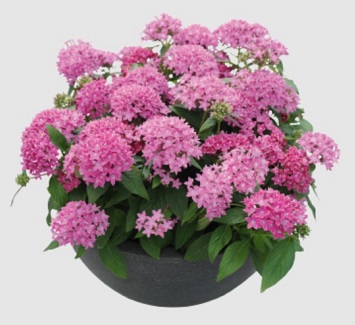
LET957 Graffiti Lavender Pink Pentas
Light purpley pink color. Very good container plant. Mid-size type, F1, uniform flowering, programmable timing, well branched 12" wide mound, flowers above foliage. Blooms in about 16 weeks from seed. Pelleted seeds for easy germination.
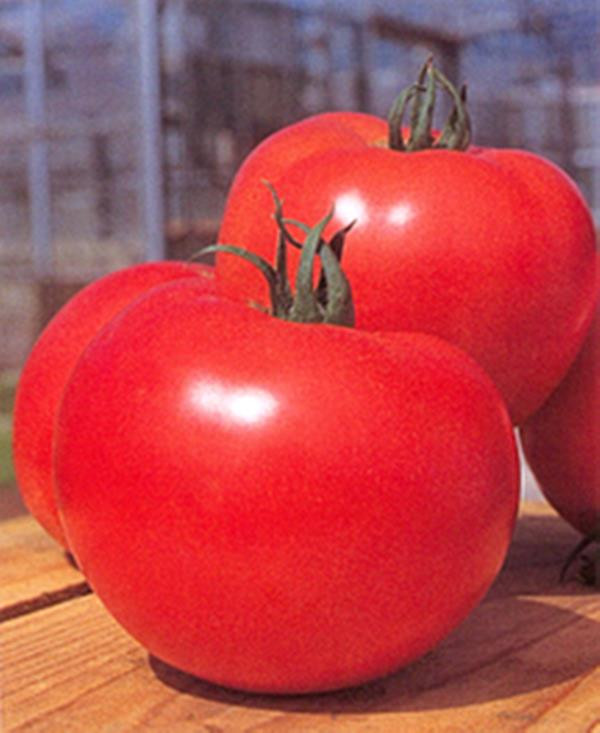
LET954 Momotaro Tomato
Momotaro is one of the most popular tomato varieties in Japanese markets and for good reason. Its flavor is an intricate and harmonious combination of sweet and tangy that has won Momotaro several tomato tasting contests. The radiant pink slicers weigh 6–7 ounces. Momotaro is durable, heat tolerant, and crack resistant with good storability. Indeterminate. A great choice for hot southern and tropical gardens.
F1 hybrid, heat tolerant, indeterminate, slicing tomato. Suitable for growing in garden plots, raised beds, and greenhouses. Resistant to Bacterial Wilt, Fusarium Wilt, Fusarium Wilt 1, Fusarium Wilt 2, Gray Leaf Spot, Root Knot Nematode, Tomato Mosaic Virus, and Verticillium Wilt. This hybrid is the dominant fresh market tomato grown in Japan. It is one of the most perfect, attractive, deliciously sweet tomatoes available. An early variety indeterminate vine-type, it is vigorous, has medium-sized leaves, a medium short internode, and 6-7 fruits per cluster. 70 days.
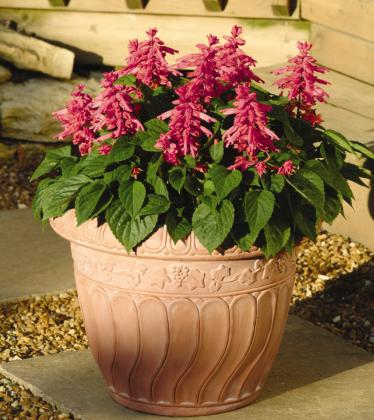
LET948 Vista Rose ( Salvia splendens )
Features masses of beautiful spikes of rose flowers rising above the foliage from late spring to early fall, and is compact, only growing 10 to 12 inches tall.
The Vista variety is one of the brightest kinds of Salvia on the market this will bloom in late spring and early summer. A hummingbird favorite!
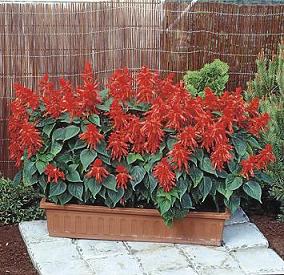
LET946 Lighthouse Red Salvia ( Salvia splendens )
Voluptuous shrublike bush type, season long display, best weather tolerance, best landscaping type. Tall, bushy plants display long-lasting color in the garden. Ideal for low-maintenance landscapes and large patio containers. Heat resistant and ideal for containers. Grows 24" tall. Attracts pollinators, especially hummingbirds! and is deer and rabbit resistant.
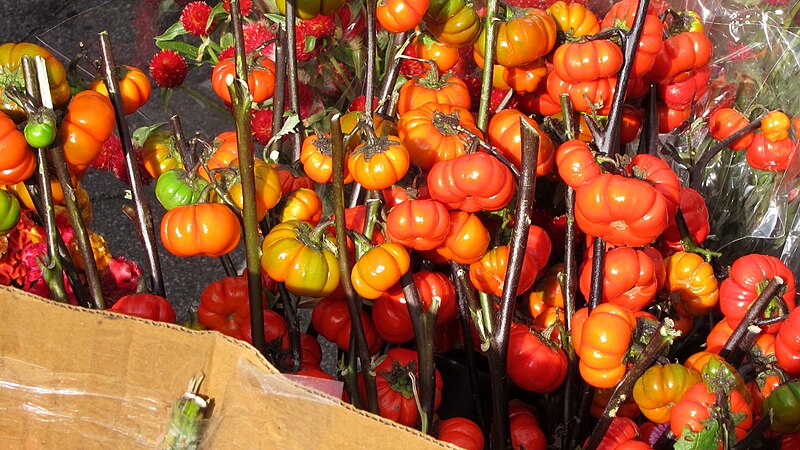
LET944 Pumpkin on a Stick ( Solanum integrifolium )
Pumpkin on a Stick has been delighting gardeners for more than 125 years, and goes by many names. Some call it Pumpkin Tree or Pumpkin Bush, because of the sturdy, long-lasting branches set with large purple thorns.
You should grow it for indoor bouquets and arrangements all autumn long! The Pumpkin on a Stick will have you asking "is it a pumpkin, a gourd or a tomato?" but it's actually an ornamental eggplant! This unique delight has been baffling gardeners for over 125 years! These ribbed fruits will resemble a tomato and then a pumpkin once it dries out. This beautiful plant will need to be staked as it can reach 4 feet tall. This prolific plant will yield dozens of little orange fruits. Pumpkin on a Stick is perfect for any indoor decorations or arrangements as it is an autumn staple!
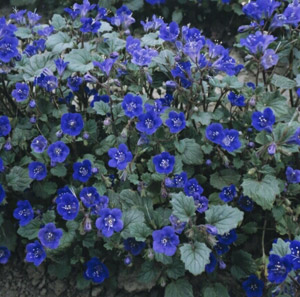
TGL063 California Bluebells ( Phacelia campanularia )
California Bluebell is native to the deserts of California thus making it very drought tolerant and it is known for its vibrant cobalt blue blooms. California Bluebell is one of the few wildflower seeds that can grow into a good cut flower. These are very easy to grow in hot sandy areas, excellent for rock gardens and problem areas where other plants will not grow as well.
California Bluebells are a beautiful self-sowing wildflower, naturally reseeding each year when seeds fall onto bare soil. This makes them a simple, low-maintenance choice for gardeners, letting you enjoy their stunning blue blooms year after year without replanting. It's an easy way to add lasting beauty to your garden with minimal effort.
California Bluebell is often grown in bee and butterfly gardens as well as xeriscape landscaping. Phacelia Campanularia is also known as Desert Bluebells, and the plant can grow in sandy soils and desert-like climates, but it is also adaptive to other climates.
It offers versatile uses, making them perfect for a variety of garden settings. Whether you’re planting them in borders, cottage gardens, rock gardens, or as part of a wildflower meadow, these vibrant blooms thrive in many environments. Their stunning flowers also make excellent cut flowers, adding beauty both outdoors and indoors.
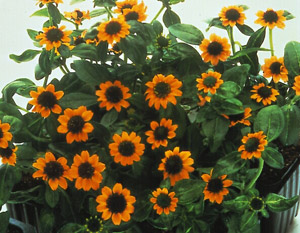
LET140 Mandarin Orange ( Sanvitalia )
1987 AAS Flower Winner. Sanvitalia Mandarin Orange is a rugged, durable annual plant that thrives under hot and humid or dry conditions. It can be planted in rock gardens, on slopes or banks where a cascading effect is desirable. Excellent for hanging baskets and tubs. Intense orange flowers with - black centers spreads 10-18" and a height of 6-10"
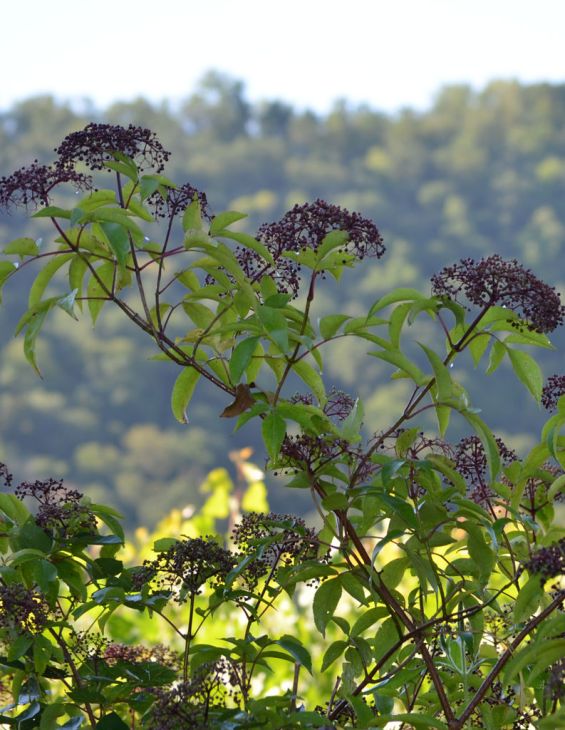
TRZ179 American Black Elderberry ( Sambucus canadensis )
This native shrub has been known for its delicious fruit used in jellies, pies or wine since native American times. It has more recently been used in landscapes for its spectacular blossoms and dramatically colored berries. It is probably best known for it's medicinal uses over many generations.
According to
WebMD, the berries and flowers of elderberry are packed with antioxidants and vitamins that may boost your immune system. They could help tame inflammation, lessen stress, and help protect your heart, too. Some experts recommend elderberry to help prevent and ease cold and flu symptoms.
It’s also been used as a treatment for: Constipation, joint and muscle pain, infections that affect how you breathe, headaches, fever, kidney problems, epilepsy, minor skin conditions, stress, HIV and AIDS
It is closely related to the European Sambucus nigra. Some authors treat it as conspecific, under the name Sambucus nigra subsp. canadensis. The primary difference is the European variety is more tree like, where the American variety is more shrublike, the flowers, fruits and uses are almost identical. Some authorities consider this plant to be a subspecies or variety of Sambucus nigra instead of a separate species.
Elderberry erupts with large, lacey sprays of white blossom clusters in June. As the flowers continue to bloom, they fill in to create large umbels and exude a delicate citrusy fragrance, inviting myriads of little pollinators to come visit. Flowers are replaced by succulent, burgundy berries that darken to a rich black-purple once they are ripe. Bowed branches drape and 'water fountain' from the center, providing dense shelter for nesting birds. The foliage turns a lovely burnished yellow in the fall.
Various studies reported in food and horticulture scientific journals report that American elderberry as well as the European elder contain antioxidants and have anti-inflammatory and anti-viral properties. According to the USDA, raw elderberry juice is a good source of iron and potassium and vitamins A, B6 and C.
Elderberry plants are easy to grow and can be grown from cuttings or potted plants. They prefer moist, fertile soil and full sun, but can tolerate partial shade and some drought. They can be grown in zones 3-9.
Seeds need 60 days
cold stratification before sowing.

TST166 Pinkeyed Purple Hull
Considered to be one of the most delicious cowpeas, we look forward each summer to the first harvest and cooking of these peas. Vigorous bush type to semi-vining plant grows 18-24 inches tall.
Pods turn purple at shell stage, are 6 to 7 inches long, and slightly above foliage. Peas light green with red eye at green shell stage, turn white with maroon eye when dry. Medium size,
rounded on ends. Good producer. 63-65 days.
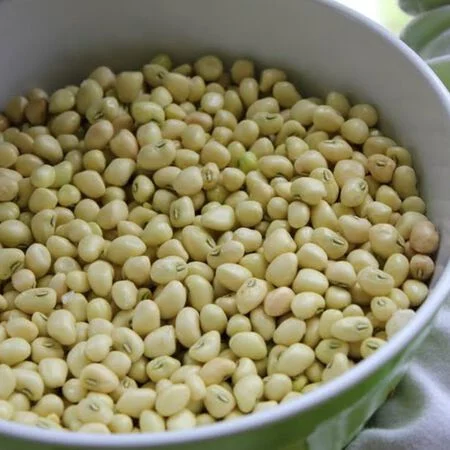
TST103 Zipper Cream Pea
This large, easy-shelling cream pea with high yields is delicious and great for the home gardener. The name comes from the ease at which the "string" can be pulled like a zipper to release the peas from the pod.
Southern favorite. Bushy 2-3 ft. plants bear prolifically. 6-9 in. pods with large, creamy-white seeds, 18-20 seeds/pod, easy to shell. Unusually, seeds have a taste between English peas and cowpeas when fresh. Expect mature pods in 66 days.
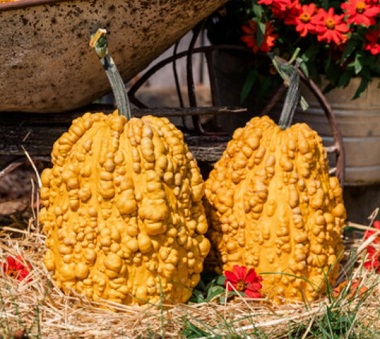
LET937 Corn Cob Pumpkin
Add a new twist to your fall decor. This variety has warts and lots of 'em! Upright fruit are covered with large popcorn like warts on a semi-bushy plant. Unique golden caramel color,
these are great for decorating the mantle, front porch and any outdoor areas. Also can be eaten like other pumpkins, has great flavor for making soups, pies, and any recipe calling for pumpkin. Averages 10-13 lbs, 95 days
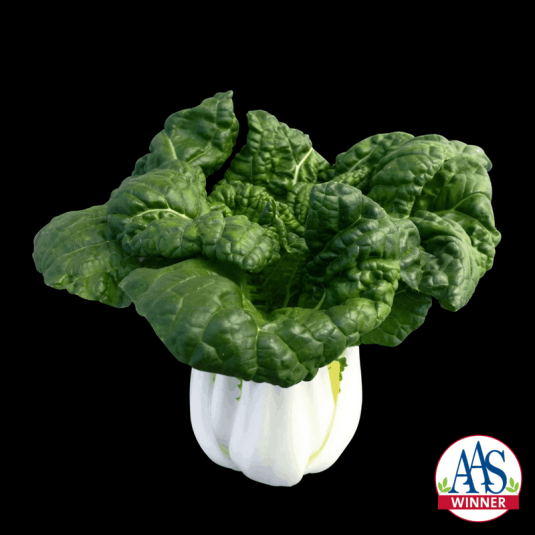
LET936 Asian Delight
2018 AAS Edible Vegetable Winner.
Asian Delight F1 Pak Choi (or Bok Choy) is a Chinese Cabbage that outperformed the comparisons by leaps and bounds. Judge after judge noted how this Pak Choi does not bolt like the comparisons, even weeks after other varieties went to seed. That means the yield from this AAS Winner can be double or even higher than that of other Pak Choi on the market. Asian Delight forms small to mid-size (5-7 inch) heads that have a tasty, tender white rib and dark green, textured leaves. One judged seeded his trial three times and all three times Asian Delight did not bolt whereas the comparisons did. "This is the best white stem mini Pak Choi I have ever seen." That’s quite an endorsement!
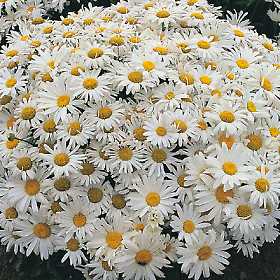
LET935 Marconi Shasta Daisy ( Leucanthemum marconi )
Marconi grows to 3 feet tall and has double white flowers ( 2 to 4 inches
across) and gold centers. Clump forming perennial. Flowers begin blooming in May, with largest show around early June, then continue sporadically until frost. Flower stalks are 2 to 4feet tall making these splendid in borders. Shasta Daisies make excellent cut
flowers, as they are long lasting and hold form and color well. Grows 36" tall.
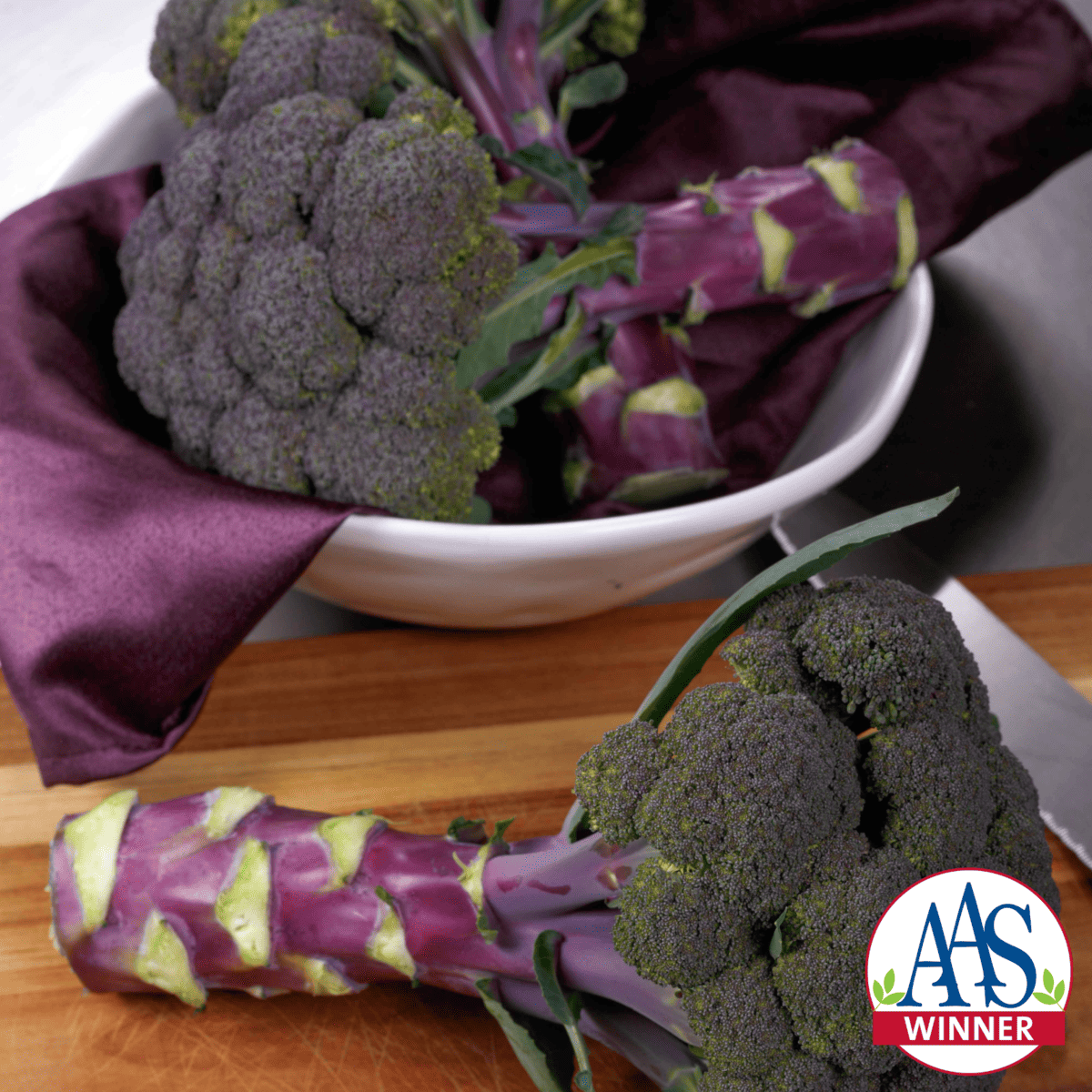
LET934 Purple Magic Broccoli
2024 AAS Edible – Vegetable Winner.
This purple broccoli is magical! How else do you explain a broccoli that has it all? From its beautiful purple color, tight uniform heads and bright beads to its great broccoli flavor, this easy to grow broccoli is also stress and heat tolerant. A showstopper.
"Wicked good! Nicest purple broccoli we've ever seen" exclaimed one very experienced edible judge.
Excellent broccoli to try growing in cooler seasons. Can be eaten raw, stir-fried, roasted, lightly blanched, or steamed for the best texture, either way, you will find it sweeter and more tender than traditional green broccoli. 90 days.
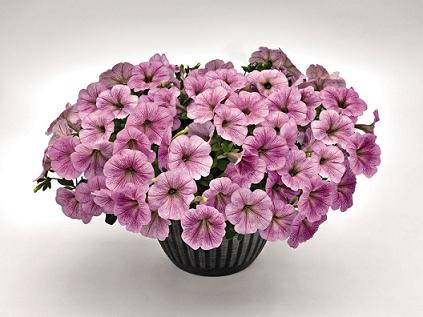
LET929 Sucess TR Silver Vein
Blush with dark rose-lavender veining, a refreshing palette. Mounds and spreads, bred for use in northern lower light areas.
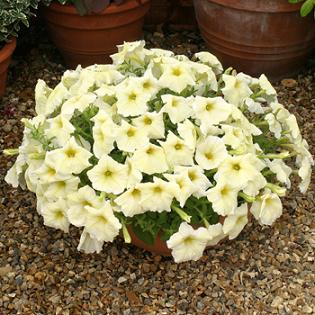
LET930 Rapide Sunshine
First yellow mounder/spreader, smashing deep yellow center especially in low light, primrose petals, cream edges.
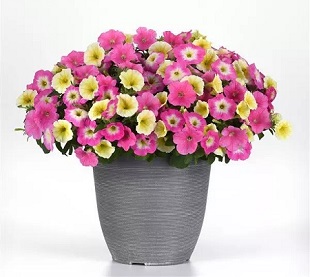
LET931 E3 Easy Wave Sweet Taffy Mix
Full and lush, E3 Easy Wave Sweet Taffy Mix petunias have an efficient, tight, domed shape; a controlled, mounding, spreading habit; and manageable vigor. The plants make great edging or ground cover in beds and borders. Planted alongside perennials and vegetables, petunias repel asparagus beetles, leafhoppers, a range of aphids, tomato worms, and many other pests.
The plants create a stunning display as the pink and yellow blooms gracefully cascade from containers, window boxes, and hanging baskets. And the flowers attract butterflies and hummingbirds to the garden.
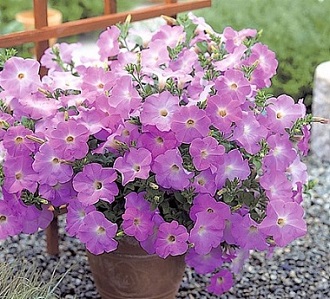
LET932 Opera Supreme Lavender
Pastel lavender color. Opera Supreme petunias are a type of petunia that are known for their trailing growth habit and early, abundant flowering. They are a popular choice for hanging baskets, window boxes, and garden beds.

LET928 Habanada ( Heat-less Jalapeno Pepper )
A truly remarkable pepper, Habanada is the world's first heat-less habanero pepper. Instead of heat, it delivers a blast of sweet tropical flavors. Excellent seared, braised, roasted, or raw, this is a versatile culinary pepper. Extremely productive and early. Can be used at the green stage, but reaches the pinnacle of flavor and texture when it turns a beautiful orange hue.
Bred by well-known organic plant breeder Michael Mazourek, Habanada is the product of natural breeding techniques. These exceptional snacking peppers have all of the fruity and floral notes of the habanero without any spice.
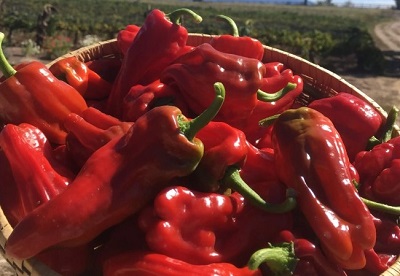
LET926 Halaby ( Aleppo ) ( Mild Spice Pepper )
Specialty Syrian spice, 3-5" blunt tip, medium heat, sweet and tangy, coveted by food gurus for exquisite chili flakes/powder. It has a mild sweet flavor of sun dried tomatoes but heat building slowly with a substantial kick behind it. Popular in Turkish and Middle Eastern/Mediterranean cooking.
It's pods are ripened to a burgundy color, then semi-dried, de-seeded, and crushed or coarsely ground. The pepper flakes are known in Turkey as pul biber (pul = flake, biber = pepper), and in Armenia as Halebi bibar. In Turkey, pul biber is the third most commonly used spice, after salt and black pepper. In Arabic, the pepper is named after Aleppo, a long-inhabited city along the Silk Road in northern Syria, and is grown in Syria and Turkey. Chiles originated in South America and were among the New World crops, like potatoes and tomatoes.
Although it is a common condiment, its use in Europe and the United States outside Armenian, Syrian and Turkish immigrant communities was rare until the 21st century, with Los Angeles magazine dating its rise in use among the broader U.S. population to the 1994 edition of The Cooking of the Eastern Mediterranean by Paula Wolfert.
68 days.
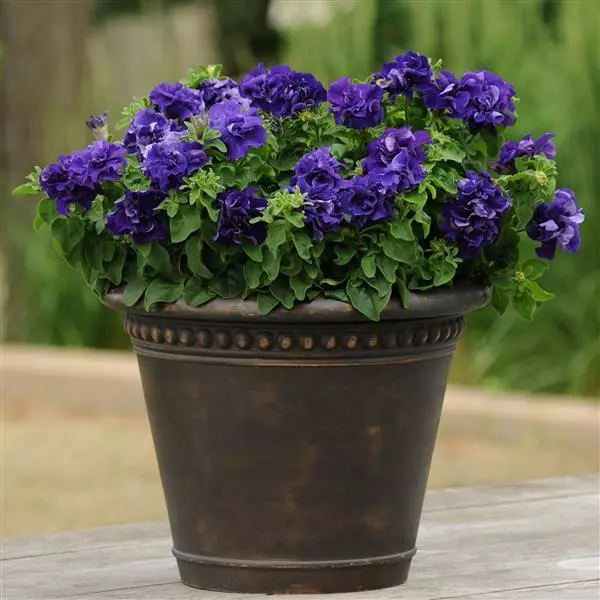
LET921 Double Cascade Blue ( Pelleted )
Grandiflora, largest flowers, earliest of this type, deep blue color.
Huge double blooms look like carnations. Outstanding habit and good branching. Well-suited to larger containers, mixed combos and beds.
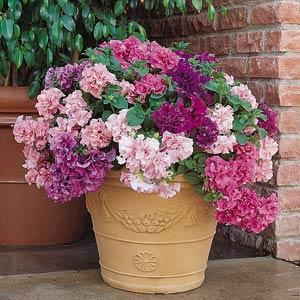
LET922 Double Cascade Mix ( Pelleted )
Grandiflora, largest flowers, earliest of this type, Mix of many colors.
Huge double blooms look like carnations. Outstanding habit and good branching. Well-suited to larger containers, mixed combos and beds.
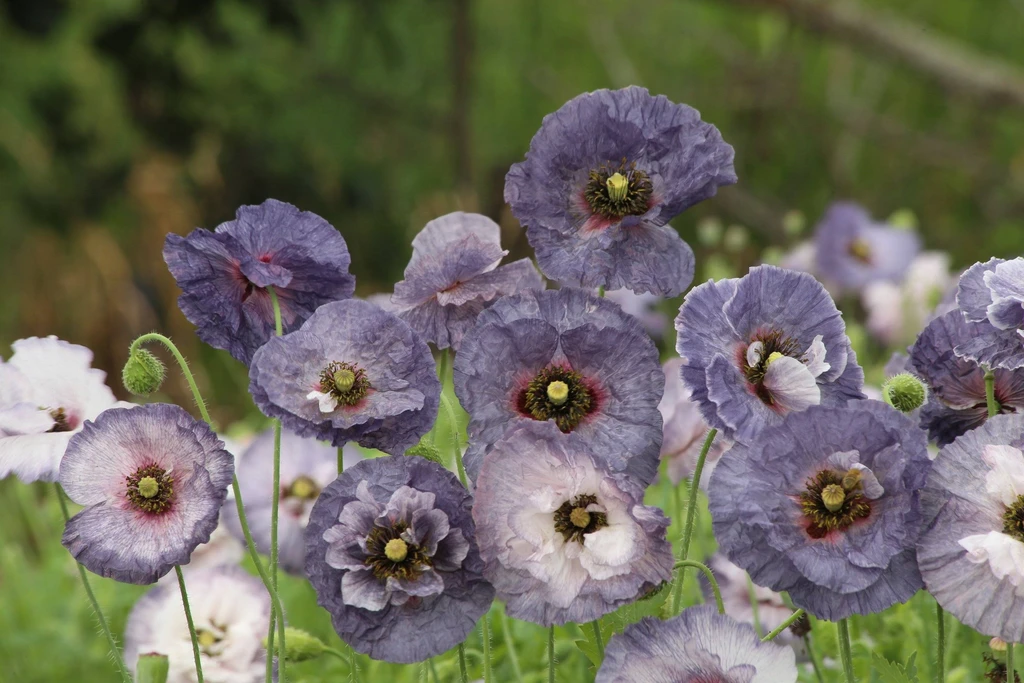
TWT165 Amazing Grey ( Papaver rhoeas )
A unique and truly impressive color in a poppy never before seen! Amazing Grey Poppies bloom in captivating shades of silver grey to slate blue. The large, single and half-double flower petals are often trimmed with white edges. A hardy annual ideal for fall or very early spring sowing. The foliage remains inconspicuous allowing the flower to express its full beauty. Prefers well drained soil in full sun to partial shade.

LET915 Little Bells ( Nolana )
Spreader, for basket, window box, or groundcover, likes poor soil in sun, light blue petunia-like flowers Seeds can be started indoors and transplanted outside to create a wonderful edge along the flower border, or fill in a large area with ground cover plants. The plant has succulent stems and foliage and creeps allowing it to spread and fill an entire area nicely.
Flowers also look beautiful in containers or hanging baskets. The trailing nature of the Nolana plant allows it to spill over the sides. Give a sunny spot with very well-drained, moderately fertile soil. The plant requires little care and it drought resistant.
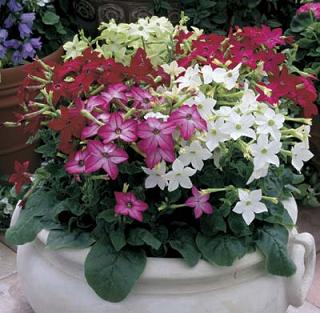
LET914 Saratoga Mix ( Nicotiana x saratoga )
Beautiful color mix of bell-shaped blossoms on bright green foliage. 12-18" stems add movement and interest to arrangements. If cut back regularly these flowers will bloom continuously. A 5-7 day vase life once cut so these do best in casual bouquets or home cutting gardens. Also a favorite for hummingbirds in pollinator gardens. Also known as flowering tobacco. Pelleted seeds for easy sowing.
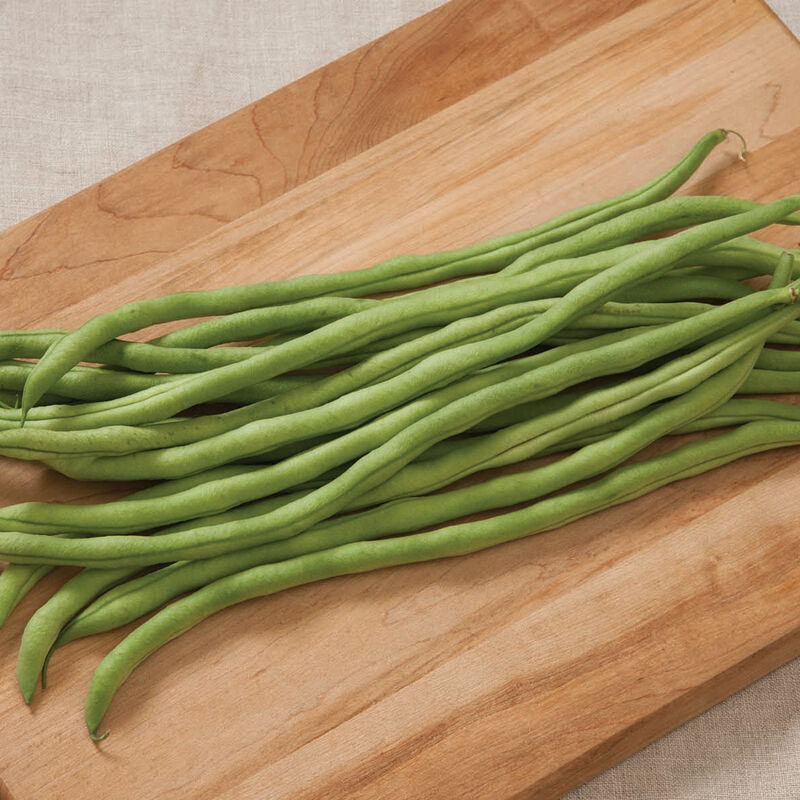
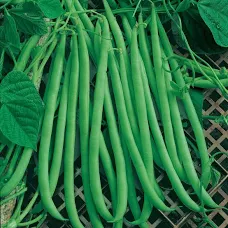
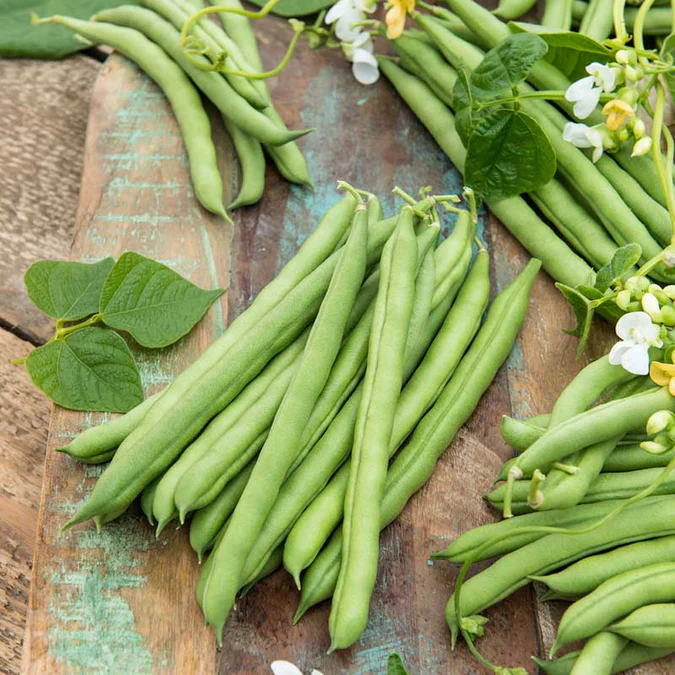
PPBKIT Seedman's Premium Stringless Pole Bean Kit
We have chosen three of our favorite truly "stringless" pole beans and combined them into one kit. Several varieties of pole beans are somewhat stringless when young, but these 3 are the most stringless we have tested. Each bean is packaged seperately. These beans have the some of the best flavor in our opinion and are really stringless. Planting these varieties will give you loads of delicious beans over a long season.
The varieties are:
Fortex. Dependable favorite with excellent flavor. Growing to over 11", Fortex produces extra-long round pods. Early and very productive, the beans may be picked at 7" in length for extra-slender "filet" beans. Green, firm-textured pods are completely stringless and delicious at all lengths, even after the seeds enlarge. Walnut brown seeds.
Each 10g pack contains about 25-30 seeds. 63 days.
Emerite. An extra refined filet type, Emerite yields stringless, 5 inch long, green beans with a tender texture and delicate, floral, sweet flavor. Vigorous, bushy, climbing plants put on a beautiful show of pink flowers followed by the beans. This crop produces early and heavily with an open habit to make harvest a snap! Black seeds. 55 days.
Each 10g pack contains about 35 seeds.
Blue Lake FM1k. If you are tired of bending over to pick your bush beans, then the Blue Lake FM1K Pole Bean is for you! This reliable pole bean offers the high yield of a bush bean, but it easily climbs up poles, fences or trellises. Plus, it will yield much longer than a bush bean - right up to frost! Blue Lake FM1K Pole Beans' stringless pods grow to 6 inches and stay sweet and crisp even at maturity! Blue Lake FM1K Pole Beans are resistant to the bean common mosaic virus. 75 days. Each 10 package contains about 50 seeds.
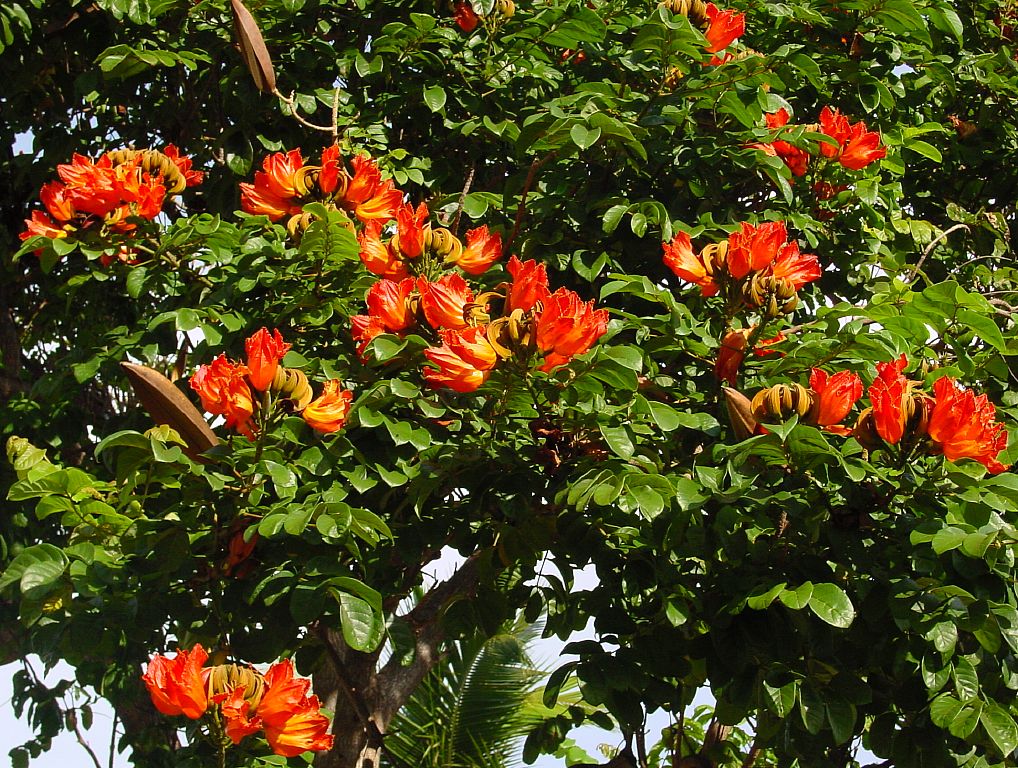
LET910 African Tulip Tree ( Spathodea campanulata )
This is a large upright tree with glossy deep green pinnate leaves and glorious orange scarlet flowers. It may grow to 80 ft on an ideal site, but most specimens are much smaller. The tree has a stout, tapering, somewhat buttressed trunk covered in warty light gray bark. The lateral branches are short and thick. The 1-2 feet long opposite leaves, which emerge a bronzy color, are massed at the ends of the branches. They are composed of 5-19 deeply veined oval leaflets.
The horn shaped velvety olive buds appear in upturned whorls at the branch tips. A few at a time, the buds of the lowest tier bend outward and open into big crinkled red orange tuliplike bells with red streaked gold throats, frilly yellow edges, and four brown-anthered stamens in the center. They are followed by 5-10 inch green brown fingerlike pods pointing upwards and outwards above the foliage. Each of these pods contains about 500 tissue papery seeds. The tree flowers in spurts all through the growing season, but peak bloom is usually in the spring.
This species loves rich soil, but puts up with just about anything with a little fertility to it, including limerock. It is not a beachfront plant, but will survive a bit of salinity. African tuliptrees need serious pruning after every freeze or windstorm. Gardeners in marginal regions should plan on growing this as a large ephemeral shrub and plant it in a sheltered place where it can be reached by ladders or bucket trucks for regular pruning and removal of dead branches.
Light: African tuliptree will survive in shade, but demands full sun for fast growth and best flowering.
Moisture: These trees grow best with plenty of moisture, but will shed their leaves and endure drought.
Hardiness: USDA Zones 10-11. African tuliptrees drop their leaves when chilled and freeze easily, but they come back from the roots vigorously and often bloom the next season. Top growth will be killed at 28-30 degrees but the roots may survive down to 22 degrees or below.
The smooth gray bark provides a beautiful background for the brilliant red flowers of the African tuliptree. Usage
African tuliptrees are grown for shade, color and tropical effects. The wood is difficult to burn, so the tree is also valuable for fire resistant landscaping. The wood has been used for blacksmith's bellows and the like. The buds contain a liquid that will squirt out if they are squeezed or pierced and children enjoy using these as water pistols. They also enjoy playing with the boatlike open seed pods. In Africa and Haiti, the flowers are thought to have magical properties and the wood is used for witch doctors' wands.
Features
This is one of the world's most spectacular flowering trees. It is also very fast growing. Young trees may put on 6 feet in height and 2 inches in diameter per year and often begin blooming when they are only a few years old.
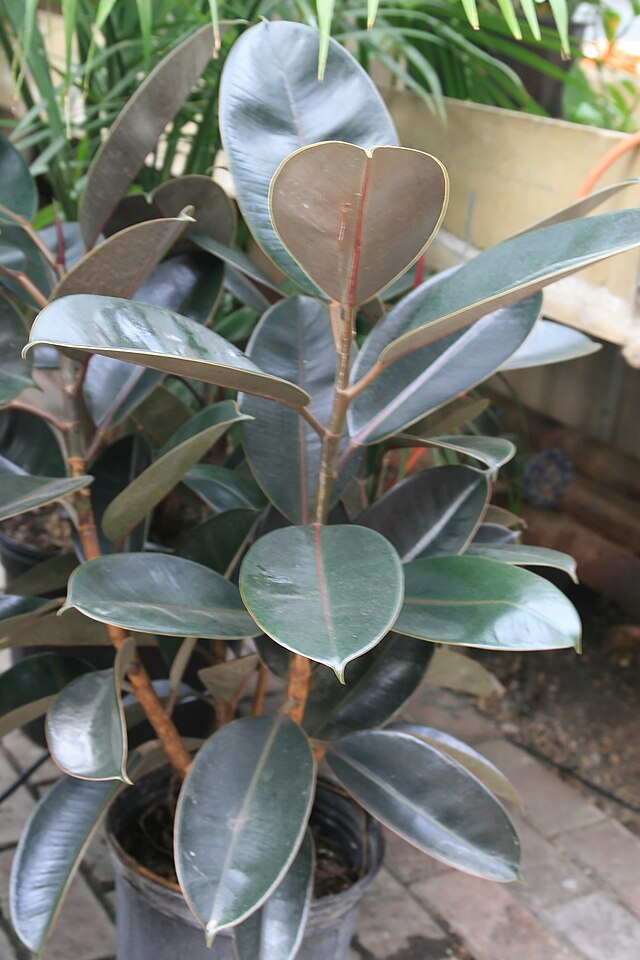
LET909 Rubber Tree Plant ( Ficus elastica )
One of the most well known houseplants. This ficus can grow up to 30 feet high in nature, but it doesn't grow that tall in pot. If it grows too high, cut it off, this will ease the ramification. It has a unique stem and large hard leaves, shiny and dark green, with a central nerve. Hardiness zones 10-11 outside in winter. The normal temperature of a house suits it year-long. This ficus will not survive temperatures below 35 degrees. This ficus appreciates a good source of light with no direct sun all year. It can live under shade, but it will definitely grow better and faster with good light. Sunlight is essential for the leaves to keep their beautiful dark green colour. This ficus appreciates rich soils.
Seed Germination: Unlike many seeds, you don’t need to bury a rubber plant seed in soil to get it growing. Instead, sow seeds on top of good potting mix, and lightly press seeds into soil. Leave the container in indirect sunlight, and spritz it a few times a day to keep it moist. You can place a light cloth over the seed whilst you spritz it to ensure better coverage.
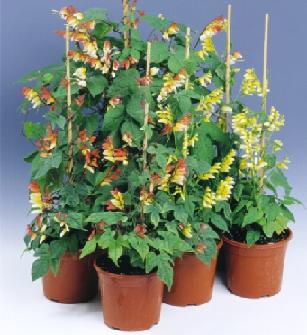
LET908 Jungle Queen
Annual. An exciting colorful climber for use in pots, containers, hanging baskets and gardens.
Jungle queen has a stronger colour contrast than ordinary Mina Lobata, a more robust selection, crimson orange flowers. If grown as pot plants periodically push the new growth downwards to the base of the plant. Blooms in 10 weeks from seed. Very good for hanging baskets.
They will attract pollinators to your garden such as Hummingbirds, Butterflies, and Bees while being resistant to Deer and Rabbits. A winner of the RHS’s Award of Garden Merit, the racemes or sprays spark with blooms that shift from red to white.
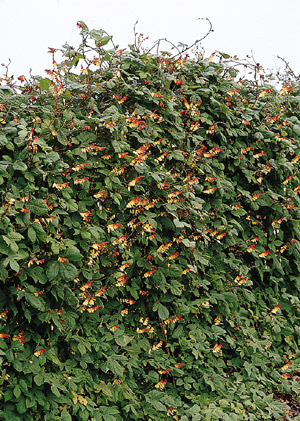
LET907 Exotic Love ( Mina lobata )
Also known as Firecracker Vine. It has distinctive fleur-de-lis shaped leaves and a very long blooming season. Climbing vine, hardy annual, showy bicolor, crimson to cream, twines over any support, easily grown in large containers as well, primed seeds for easy germination.
A nice cover for shed walls or fences or pump houses, will grow to 18 feet, but can also be pruned to any size you desire.

LET906 Strawberry Blonde
New World marigolds introduce germplasm never seen before in marigolds! Unique changing multiple flower colors are borne on one plant. Sturdy branched plants produce large 2 1/2” blooms that offer a completely new look for premium packs, pots, and decorative containers. Perfect for spring and early summer sales where color contrast will be at its maximum.
Color: Flowers open deep pink w/a yellow crest, then to turn rustic yellow as they age. Grows about 10 inches tall and blooms in 11 weeks from seed.
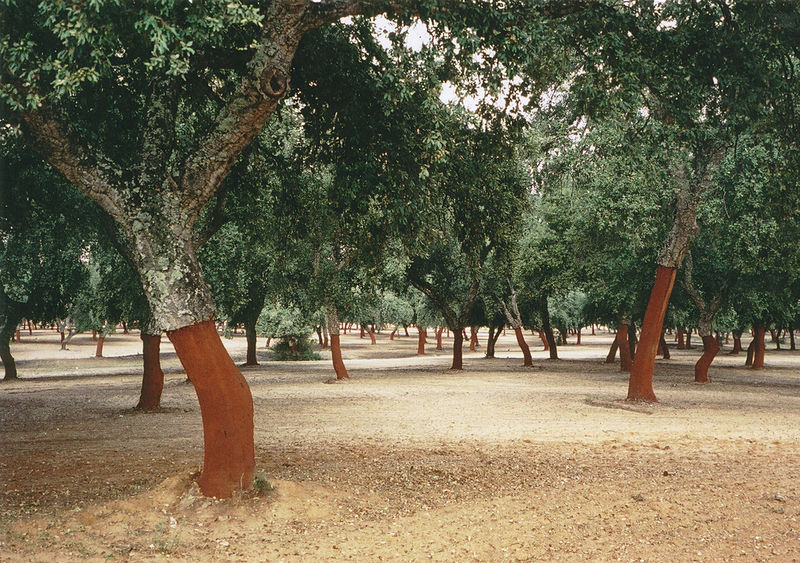
Q32 Cork Oak ( Quercus Suber )
Good for zones 7-9. Quercus suber, commonly called the Cork Oak, is a medium-sized, evergreen oak tree with thick, corky bark that is deeply ridged.Mature tree can reach 70 ft tall and spread to 50 ft. wide. Native to W. Mediterranean and N. Africa.
It is the primary source of cork for wine bottle stoppers and other uses, such as cork flooring. It is native to southwest Europe and northwest Africa.
The tree forms a thick, rugged bark containing high levels of suberin. Over time the cork cambium layer of bark can develop considerable thickness and can be harvested every 9 to 12 years to produce cork. The harvesting of cork does not harm the tree, in fact, no trees are cut down during the harvesting process. Only the bark is extracted, and a new layer of cork regrows, making it a renewable resource.
Cork Oaks are sometimes planted as individual trees, providing a minor income to their owners. The tree is also sometimes cultivated for ornament.
The tree is cultivated in Spain, Portugal, Algeria, Morocco, France, Italy and Tunisia. Cork Oaks are considered to be soil builders and their fruits have been shown to have useful insecticidal properties.
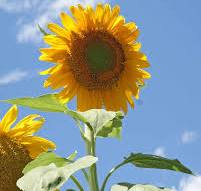
TPF298 Grey Stripe Sunflower
Grey Stripe Sunflower is also called Mammoth Sunflower. This sunflower can grow up to 8 feet tall. It produces the large grey striped seeds used for human and animal food. Makes lots of birdfood! Flowers can be up to 10 inches across and have bright yellow, feathery petals with a brown center. Flowers are attractive to honey bees, wild bees and other pollinators. A favorite variety for eating and growing, and perfect for a kid's garden and for making loads of delicious snacks!

LET898 Marley Hybrid Sunflower
This statuesque beauty is bound to set a new trend in the sunflower market with striking flowers in an eye-catching color combination. Distinctive, 4 1/2 to 6" blooms have petals that are a blend of charming yellow with reddish-purple rings in varying shades surrounding dark centers. Bloom colors are deeper under warmer conditions and strong light intensity. Large blooms, along with side shoots of secondary blooms stand out nicely against green foliage on tall plants. Make an excellent cut flower with pollen-free blooms, has a long vase life and strong sturdy stems - it's sure to become a florist favorite. A long day flowering type. Thrives in both spring and summer programs. Ht: 51-71". Annual.
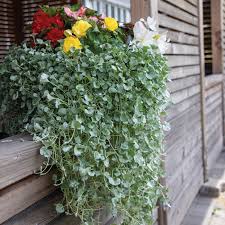
LET897 Silver Surfer™ ( Dichondra argentea )
Attractive, plants have small, silvery leaves that grow along silver stems, feature outstanding root development for faster growth and trail up to 60". Makes an excellent choice for hanging baskets, inside or out and is a real eye-catcher in mixed containers. Vigorous plants have exceptional branching and thrive when used as a ground cover, as well. No pinching required. Delivers strong performance in hot, humid and dry conditions. Plug crop time in 288 plug trays is 5 to 6 weeks; transplant to finish in pots is 6 to 9 weeks. Spreads 11". Height: 3". Annual.
Cannot ship to HI.
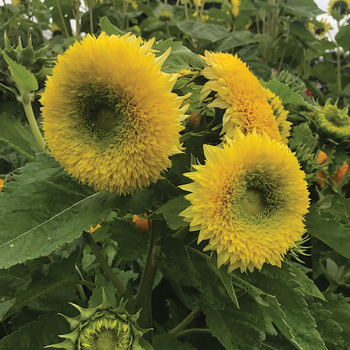
LET440 Gummy Bear
2022 Fleuroselct Gold Medal Winner and Approved Novelty! Gorgeous lemon yellow, 4 to 8" double flowers contrast beautifully with the lush dark green foliage. Multiple flower heads grow abundantly on sturdy stems. A mid-early variety, with long-lasting flowers, that is well-suited for both the prefessional and hobby gardening markets. Great for large garden beds and ideal for landscapes where it adds eye-catching color and height. Plants are well-shaped and uniform. Ht. 36-48". Annual. 75-85 days.
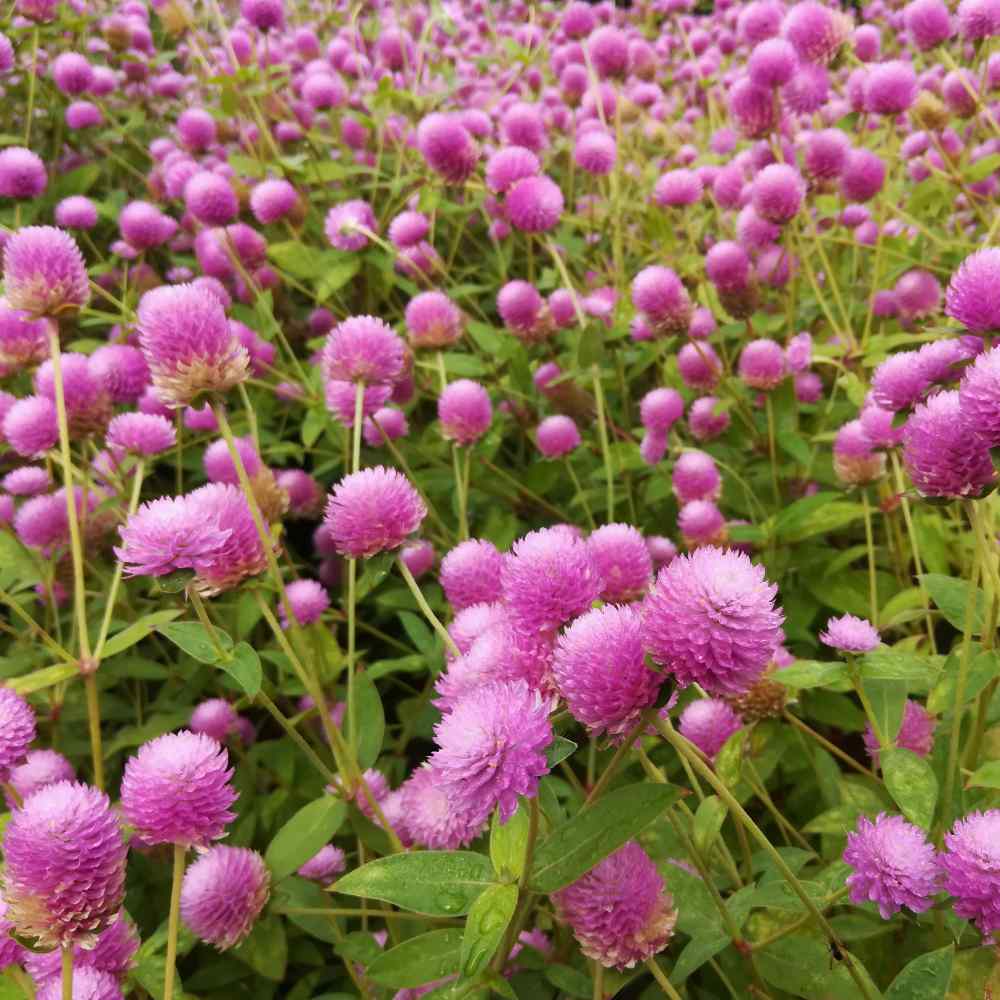
LET896 Rose ( Gomphrena globosa )
This rose colored Globe Amaranth has a brilliantly colored bloom about an inch wide and shaped something like a very fat strawberry. It grows on stiff stems which make it an ideal cutting flower.
Gophrena plants are used in annual beds and borders. In mass plantings, the round flower heads produce an interesting texture, and their bright colors last late into the season. Their low stature makes them well suited for edging around taller plantings. Globe Amaranth is often grown in containers on the porch or deck. Height 24".
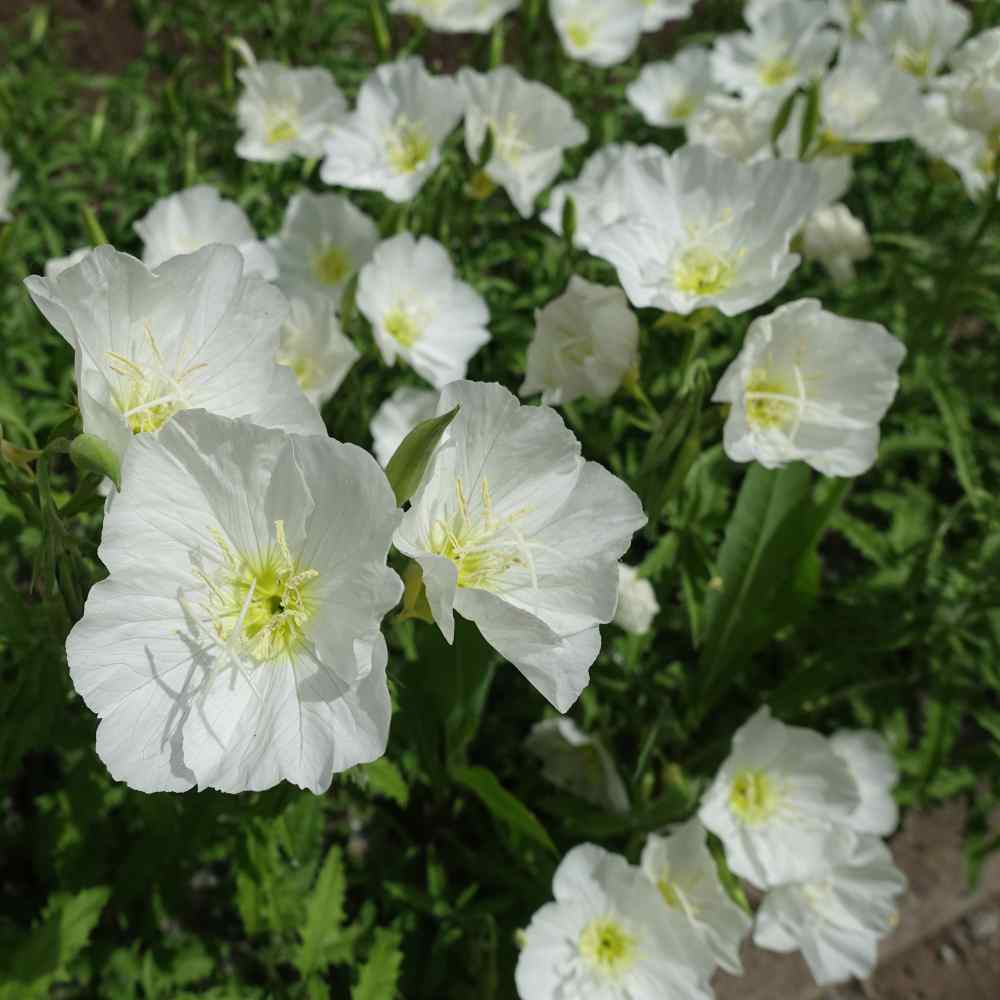
LET895 Pale Evening Primrose ( Oenothera pallida )
Pale Evening Primrose (Oenothera Pallida), also known as White Buttercup, is a beautifully fragrant perennial perfect for xeriscape gardens. This drought-tolerant plant thrives in USDA zones 3-9, producing delicate white flowers that fade to a soft pink, blooming all summer and into the fall. Growing 8-16 inches tall, it is established easily from seed and can be contained in planters to prevent spreading by its underground runners. Ideal for adding a sweet almond fragrance to your garden, this versatile plant begins to bloom just two months after planting, offering a quick and lasting display. It is available in 2 different sizes to suit your various needs.
he Pale Evening Primrose not only offers stunning visual appeal but also fills your garden with a gentle, sweet fragrance. As the flowers bloom in the evening, they release a delightful scent that enhances the ambiance of your outdoor space. These exotic flower seeds add a sensory dimension to your garden, making them an ideal choice for those looking to create an inviting and fragrant environment with our evening primrose seeds.
Pale Evening Primrose, are ideal for USDA Zones 3 to 9, making them a versatile choice among perennial plants for outside. These evening primrose seeds thrive in a variety of climates, from cooler northern regions to warmer southern areas. This hardy perennial flower ensures that gardeners across diverse regions can enjoy its delicate, pale-yellow blossoms year after year, adding a soft touch to any landscape.
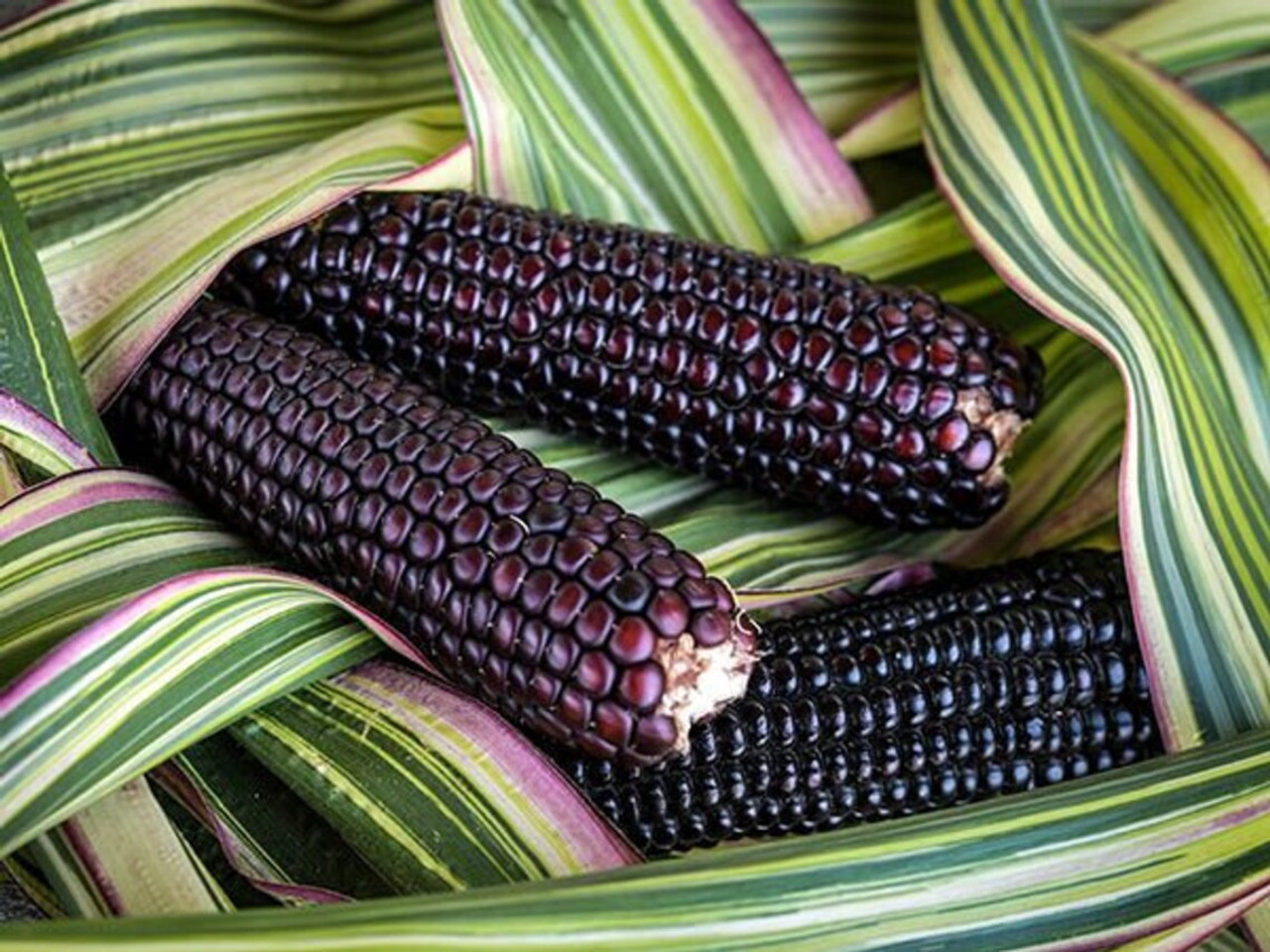
TPF297 Japonica Striped Maize ( Ornamental Corn )
Stunning as an ornamental plant. This is an heirloom from Japan which was first listed in the 1890's as Striped-Leafed Japanese Maize. The unusual variegated leaves are striped with green, white, yellow, and pink. The tassels are dark purple and the kernels are burgundy red. The colors develop best when the plants are widely spaced 12-18 inches apart.
Growing 4-6 feet tall, this beauty has deep purple, almost black popcorn kernels. It makes a magnificent and edible Halloween or Thanksgiving decoration. The multi-colored, striped plants can be grown in containers and are especially striking when paired with brightly colored petunias or sweet potato vines. The leaves are hot pink, green, yellow and white. Each plant is uniquely colored. 85 days after planting, purple tassels appear followed by burgundy ears of corn.
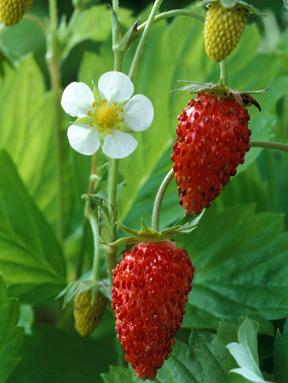
LET893 Rugen Improved Strawberry
Improved Rugen is a delicious alpine strawberry. Produces strong, upright plants that are great for rock gardens, border plantings and edible landscapes. Rugen produces smaller, elongated red berries with a sweet flavor. First grown over 250 years ago in France, these Alpine natives grow well in either sun or shade.
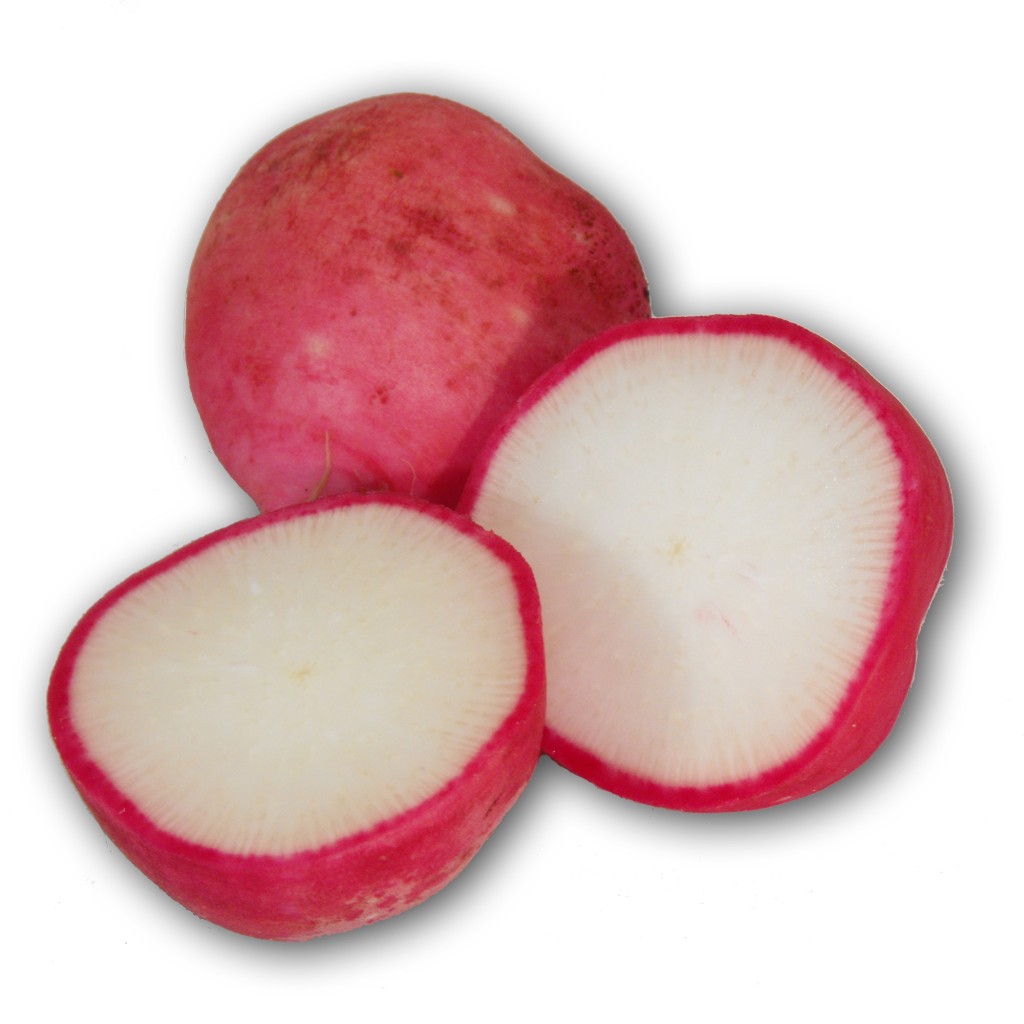
LET889 German Giant Radish
If you are looking for volume and falvor, German Giant is a very nice radish to grow in your garden. It is larger than other spring radishes without getting woody or spongy. Can be harvested anywhere from marble to baseball size. Bright pink/red skin, crisp white flesh with a distinct sweet flavor followed with a nicely pungent kick.
These whoppers are known for reaching baseball size; however, at any size, they remain sweet, tender, and free from cracks. These giant red radishes take about 30 days to grow to full size but can be harvested earlier when they are smaller as well.
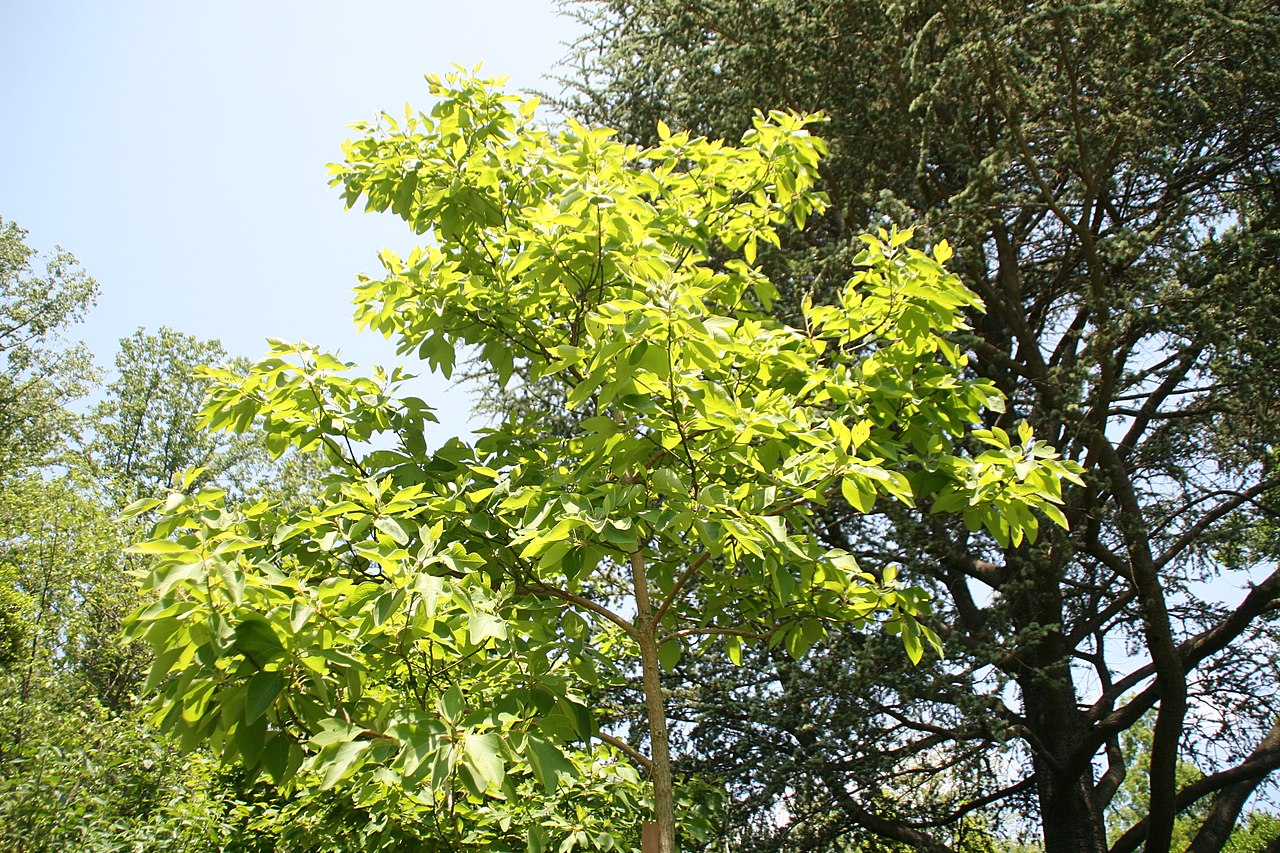
TRZ178 Sassafras ( Sassafras albidum )
Introduce yourself to the vibrant Sassafras albidum, a versatile deciduous tree that graces North America with its beauty and uses. Known for its vibrant fall colors, the Sassafras grows to around 45-100 ft tall with a trunk of up to 24 inches in diameter and a crown of slender branches. The furrowed bark is dark red-brown, and its leaves come in three unique shapes, each of which can be found on the same branch. In the fall, leaves turn enchanting shades of yellow, orange, and purple.
Sassafras boasts small, fragrant yellow flowers and dark blue fruits that sit on a bright red stalk—an enticing treat for birds. The roots and leaves have been traditionally used in tea-making and even soups due to their aromatic and spicy qualities.
Sassafras is valued beyond its aesthetic appeal. It has roots in medicinal use, primarily for pain relief and dental hygiene, due to its essential oil, aptly named Sassafras oil. Its root bark has also been used to extract acids for perfume manufacturing.
The wood of Sassafras, a durable, deep orange-brown, was once used for various needs such as posts, rails, and small boats. Today, it’s often admired as a distinctive choice for furniture.
With all these wide-ranging benefits and delightful features, it's easy to see why Sassafras albidum is loved by many.
Excellent for naturalized plantings or screens where they are given lots of space to colonize. Also can be grown as lawn specimens. Zones 4-9.
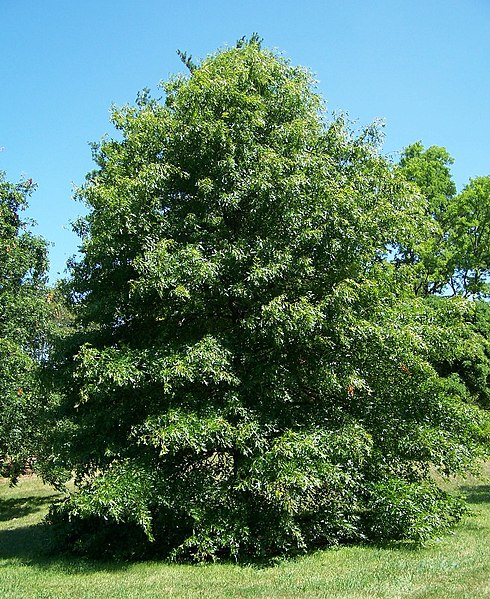
Q100 Southern Red Oak ( Quercus falcata )
Good for zones 6-9b.
The Quercus falcata, also known as the Southern Red Oak or Spanish Oak, is a medium to large-sized deciduous tree with a long, straight trunk and upward-reaching branches that form a high rounded crown. It can reach up to 130 ft tall, and its leaves are 4-12 inches long and dark green on top, with a rusty and hairy underside. The tree produces short acorns in a flat cup, and it can be found from southern New York to Texas. Although susceptible to fire, the Quercus falcata can sprout after one, making it a dominant species in pine and hardwood forests. Withstanding up to 150 years, the Southern Red Oak or Spanish Oak can become a towering beauty on any property or landscape.
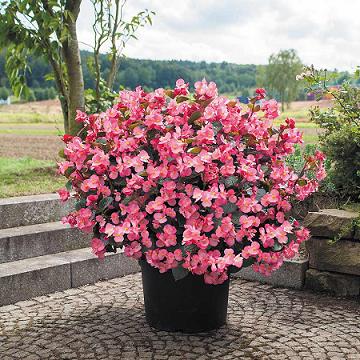
LET888 BIG Pink Bronze Leaf Begonia ( Pelleted )
Pastel pink with bronze leaf. Superlative landscape whopper, 2-3" huge flowers, glossy rounded leaf, iron clad continuous bloomer all season in any weather.
BIG Begonias are easy to grow and thrive in sun or shade. Landscapers around the world depend on BIG Begonias for their most demanding installations. Growers and landscapers know BIG Begonias deliver an outstanding show of color even under the most challenging conditions.
When the "color" matters, BIG Begonias are kind of a BIG deal!
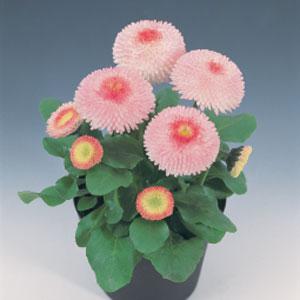
LET882 Tasso Strawberries & Cream ( Bellis perennis )
Lovely shades of two toned pink and white flowers on five inch tall plants. Makes great hanging basket.
A colorful carpet of flowers for the spring garden. Attractive with pansies or spring bulbs. Ideal as a small-scale groundcover, in rock gardens or at a garden’s edge. Plant in a cool site with moist soil for best performance and continued reblooming. Perennial. Outside: zones 4-8. Pelleted seeds for easy sowing.
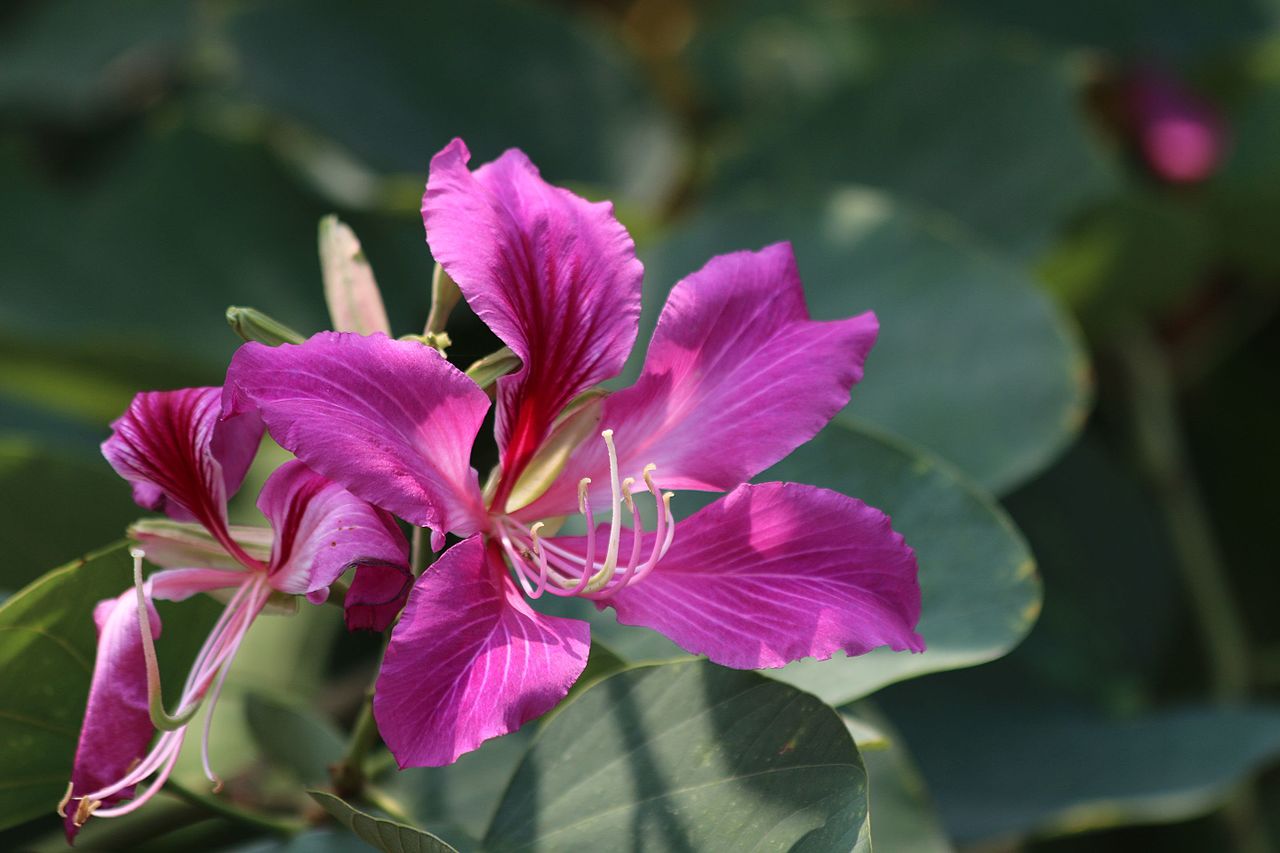
TRZ177 Butterfly Tree ( Bauhinia purpurea )
Bauhinia purpurea is a species of flowering plant in the family
Fabaceae, native to South China (which includes Hong Kong) and
southeastern Asia. In the United States of America, the tree
grows in Hawaii, coastal California, southern Texas, and
southwest Florida. Common names include Hong Kong Orchid Tree,
Purple camel's foot, and Hawaiian orchid tree.
It is a small to medium-sized deciduous tree growing to 17 m
tall. The leaves are 10-20 cm long and broad, rounded, and
bilobed at the base and apex. The flowers are conspicuous, pink
and fragrant, with five petals. For zones 9-10.

JB276 Chocolate Bubblegum Basil
A unique basil with a great aroma. Chocolate spicy scent, vigorous erect shrublike plant from India, mildew resistant, toothed green leaf, creates a soothing tea.
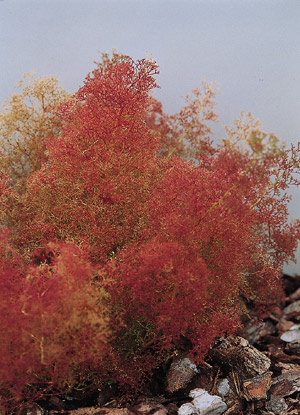
LET881 Sea Foam ( Teloxys Aristata )
Teloxys aristata also called "Sea Foam" or "Zeechium" is a particularly attractive annual plant for lovers of dry bouquets, architects and designers. Indeed, its stems are used for reproducing miniature trees.
Seafoam trees, made from the dried branches of the seafoam plant (also known as ghostwood or corkwood), are commonly used in architectural and railway model making, especially in creating realistic landscapes and dioramas.
Also called Tumble-weed ( it is not related to tumbleweed ), this everlasting plant makes a great florist's filler. The flowers open green and with the rest of the plant turns red in late summer early autumn. The whole top of the plant is usable.
Easy to start from tiny seeds, germination is low, about 25%. Easy to grow inside plant as long as it is giver bright light and soil kept to the dry side. They are really a weed in the wild. Can be grown in plain garden soil outside, or about any type of potting soil inside, a very low maintainance annual plant.
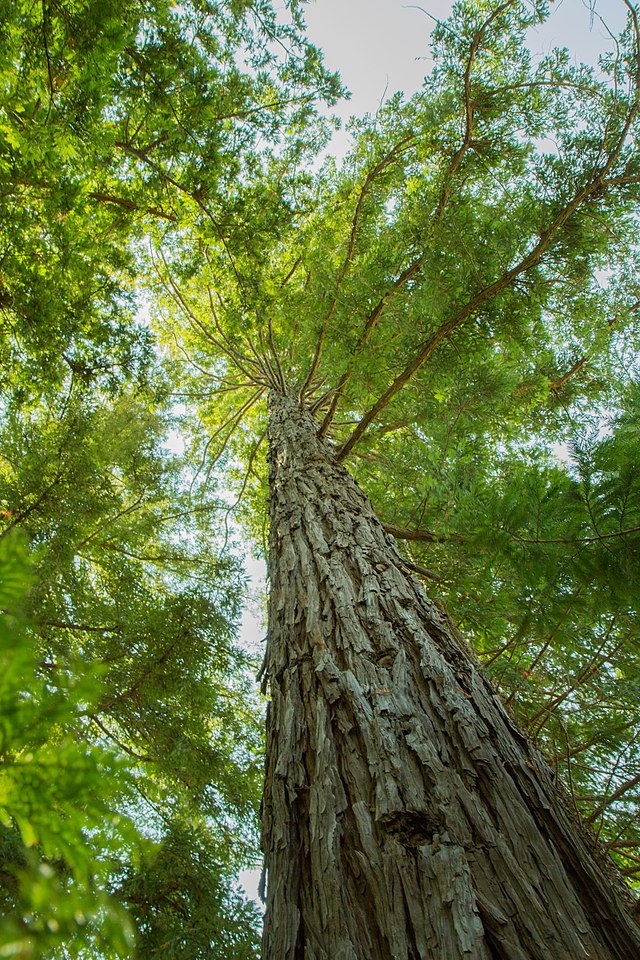
JB162 Coast Redwood ( Sequoia sempervirens )
The Coastal Redwood is the tallest tree in the world and can live for over 2,000 years. It is a densely branched evergreen conifer that grows to a height of 60 feet to 200 feet or more. The trunk of the tree flares at the base. It has a pyramidal shape with horizontal branches when young. As the tree ages, it becomes more conical and loses its lower branches. This tree is one of the fastest growing conifers and averages 3 feet per year. Many of the trees are protected in places such as the Redwood National Park, Muir Woods, and some of California's State Parks. It is a close relative to the Giant Redwood, and each is designated as the State Tree of California. It is a member of the Cupressaceae or cypress family.
The genus's name, Sequoia, is named in honor of the Native American Cherokee Chief Sequoyah. The epithet, sempervirens, means "evergreen."
It is native to Southwest Oregon to Central California in the moist, foggy, coastal plains along the Pacific Coast.
The Coastal Redwood prefers full sun or light dappled shade. It performs well in rich, moist, and well-drained soil. It is tolerant of wet soil, but it is intolerant to dry soil. This tree will grow best in cool, moist, coastal climates. It does not require pruning. It is propagated by seeds or root cuttings.
The bark is reddish-brown, hard, furrowed, and very thick. The leaves are needle-like, flat, spiral, two-ranked, green on the upper surface, and have two stomal bands on the underside of the needles. The small cones are hard and woody.
Zones 7a-9b.
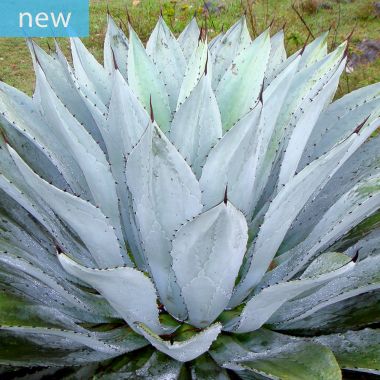
LET878 White Ghost Agave ( Agave hiemiflora )
A midsized Agave from rocky outcrops in the highlands of Chiapas, Mexico and Guatemala that forms a tight rosette of broad, pale, bluish or yellowish-green leaves with pronounced thorns. It is a robust species, hardy to drought, but tolerates only mild freezes.
Best suited for containers or zone 8b or higher outside
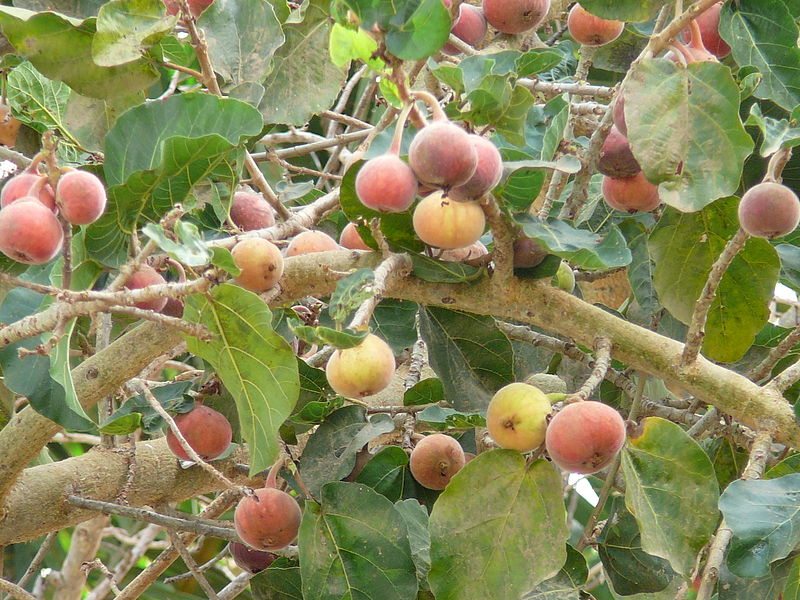
Image:Atamari, CC BY-SA 3.0 , via Wikimedia Commons
LET877 Sycamore Fig Tree ( Ficus sycomorus )
Ficus sycomorus, called the sycamore fig or the fig-mulberry, sycamore, or sycomore, is a fig species that has been cultivated since ancient times.
The fruits can be used similarly to the common fig, but are often eaten fresh for their juice or processed into various dishes and drinks. Semi-deciduous, large, spreading tree to 60 feet. Best suited for zone 9 and higher, and is tolerant of hot and dry conditions.

LET460 Giant Leaf Fig ( Ficus lutea )
This is also known as Dahomey rubber tree. It has enormous spreading branches and usually grows about 50-60 feet tall and is grown for its ornamental appeal and as a shade tree.
The large, glossy green leaves have attractive, light veins. Ficus lutea is widespread over tropical and southern Africa and found in a variety of forests and woodlands from sea level to 1800 m. It is a very fast growing tree that makes an exceptional ornamental for warm temperate and tropical regions in USDA Zones 10 and above. Easily maintained as a potted plant by occasional grooming of the branches and aerial roots.
A tree of many uses in Africa, the tree is harvested from the wild for local use as a source of medicines, fibres, dyes, latex and potash. Plantations have been established in Florida and SE Asia for the production of latex, which is valued in the pharmaceutical industry. The fruits are edible and eaten in West Africa.
The latex can be used to make a good quality rubber, known as Dahomey rubber, which is where the name orignates.
It also is known for its abundance of fruits borne directly on the branches.
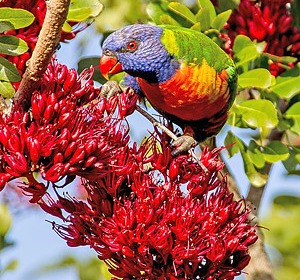
W254 Drunken Parrot Tree ( Schotia brachypetala )
The name Drunken Parrot Tree comes from the fact that individual flowers contain so much nectar that it has a tendency to ferment before the birds can eat it all, resulting in a mild narcotic effect on the birds.
These tropical trees will start blooming when they are still quite young. The abundance of rich deep red flowers are produced straight after the new leaves during September and October, but exact flowering times will vary from tree to tree. This irregularity in blooming times is of value to the nectar feeding birds, and ensures a longer feeding season. The flowers produce such copious amounts of nectar that it literally 'weeps' from the flowers.
This is an exceptional ornamental tree for gardens and parks and looks wonderful as part of a larger landscape, or planted singly as a specimen tree. Do not plant it near paved areas or car parks etc, where the dripping nectar could become a problem. When in bloom it will attract a wide variety of birds, animals and insects. The nectar will attract nectar-feeding birds like sunbirds, the nectar will also attract many insects, and therefore insect-eating birds.
Easy to grow in warm frost-free areas, where it remains evergreen and grows surprisingly fast. In colder, dry, inland regions it is slower-growing and deciduous, losing its leaves for a short period in winter or spring. It is semi-hardy to moderate frost if it is planted in a protected part of the garden and young trees are covered in winter, until they are more established. An established tree can withstand minimum winter temperatures of about 24 degrees. It is remarkably hardy in dry regions with poor soil, but for best results in the garden, plant in deep very well-drained soil, to which generous quantities of compost has been added and a dressing of bonemeal. A general purpose granular fertiliser can be used during the growing season. It loves in full sun and will respond well to judicious watering in the garden, especially when young, and during prolonged dry periods.
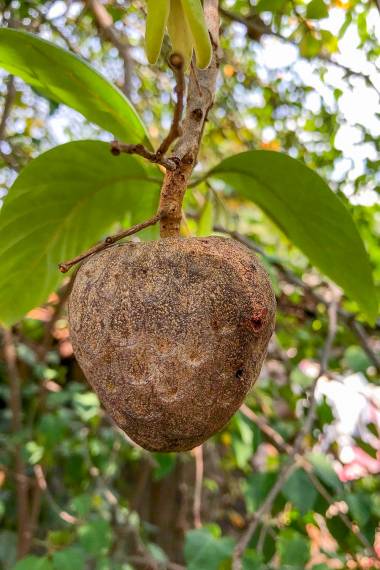
TRZ175 Custard Apple ( Annona reticulata )
Custard-apple originated in the Caribbean and Central America. It is cultivated and occasionally naturalized in tropical areas worldwide, including Florida in the U.S., Southeast Asia, Taiwan, India, Australia, and West Africa.
The custard-apple fruit varies from heart-shaped to cylindrical or spherical, is beige to brownish red when ripe, and may weigh 2 pounds or more. The flesh is white and creamy, and is used to make beverages, juice, and ice cream.
Unripe fruit and leaves are anthelmintic (kills intestinal worms and parasites), and the seeds and leaves have insecticidal properties and may be somewhat toxic if consumed. Various parts of the plant are used in traditional medicine: a poultice from crushed leaves is used to treat boils, abscesses and ulcers; dried unripe fruit and bark are used as a remedy for diarrhea and dysentery. The bark is very astringent and the decoction is taken as a tonic and also as a remedy for diarrhea and dysentery; root bark fragments may be placed on gums for toothaches; and a tea made from roots is used to treat fevers (Morton 1987).
Easily grown container plant,
or zone 10 outside.
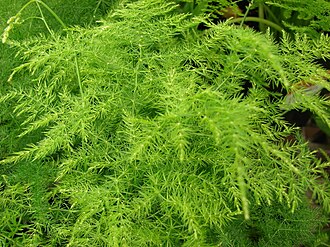
LET875 Climbing Lace Fern ( Asparagus setaceus )
More upright and with a bit more twinging habit than common Asparagus Fern, Climbing Lace Fern is cultivated as an ornamental plant, for planting in garden and containers, and as a house plant. The attractive foliage is also used in floral arrangements. It is hardy to 34°F, but does not tolerate being frozen. Therefore in temperate zones it is normally cultivated indoors in bright, indirect light.
This plant has gained the Royal Horticultural Society's Award of Garden Merit.
Where winter hardy, grow along fences or as a wall screen. Good houseplant for bright, sun-filtered areas. Good for hanging baskets. Green stems are valued by florists as showy additions to flower arrangements.
Seed Germination: Plant at least 2-3 seeds per pot. Bottom heat is helpful. Takes 14-30 days to germinate.










































































